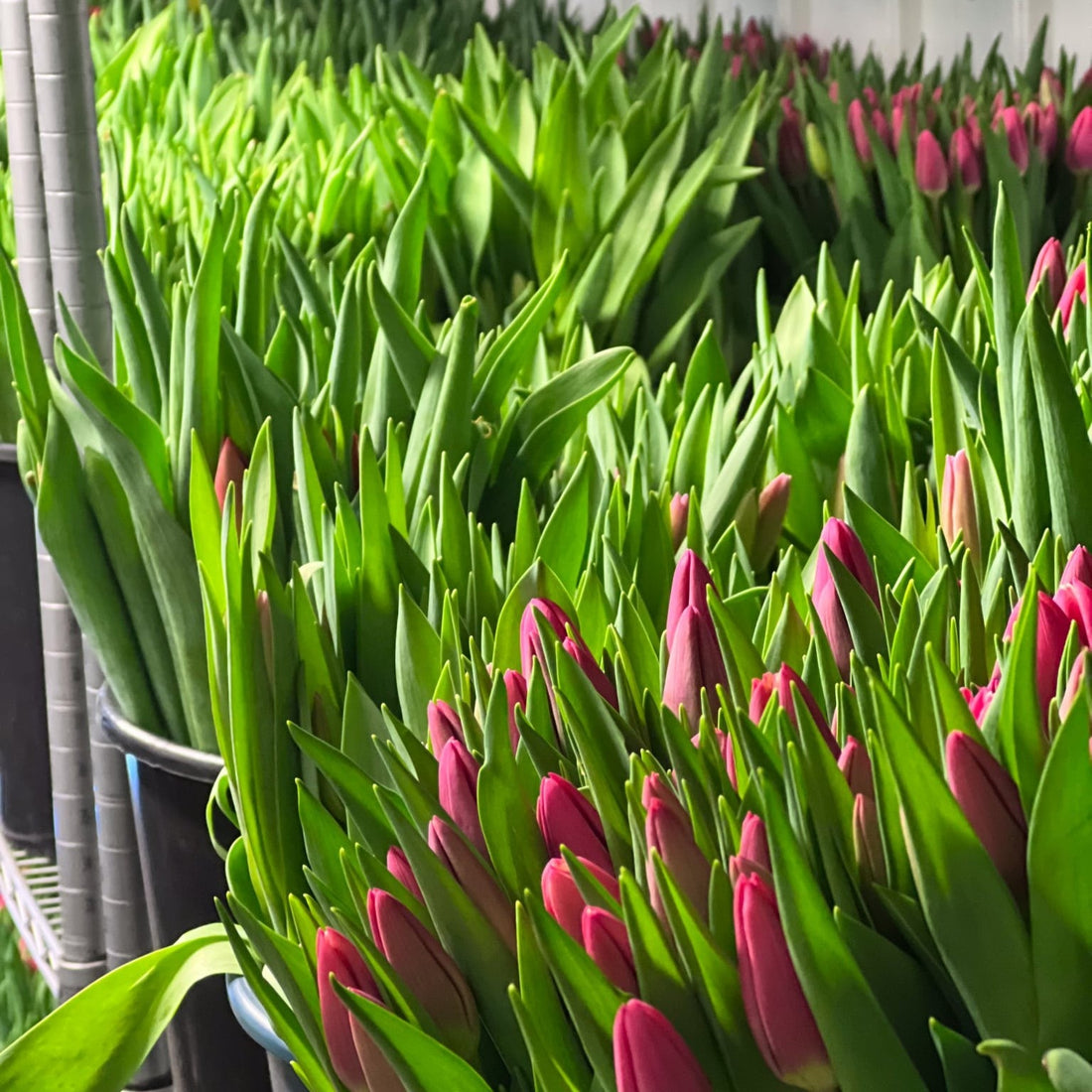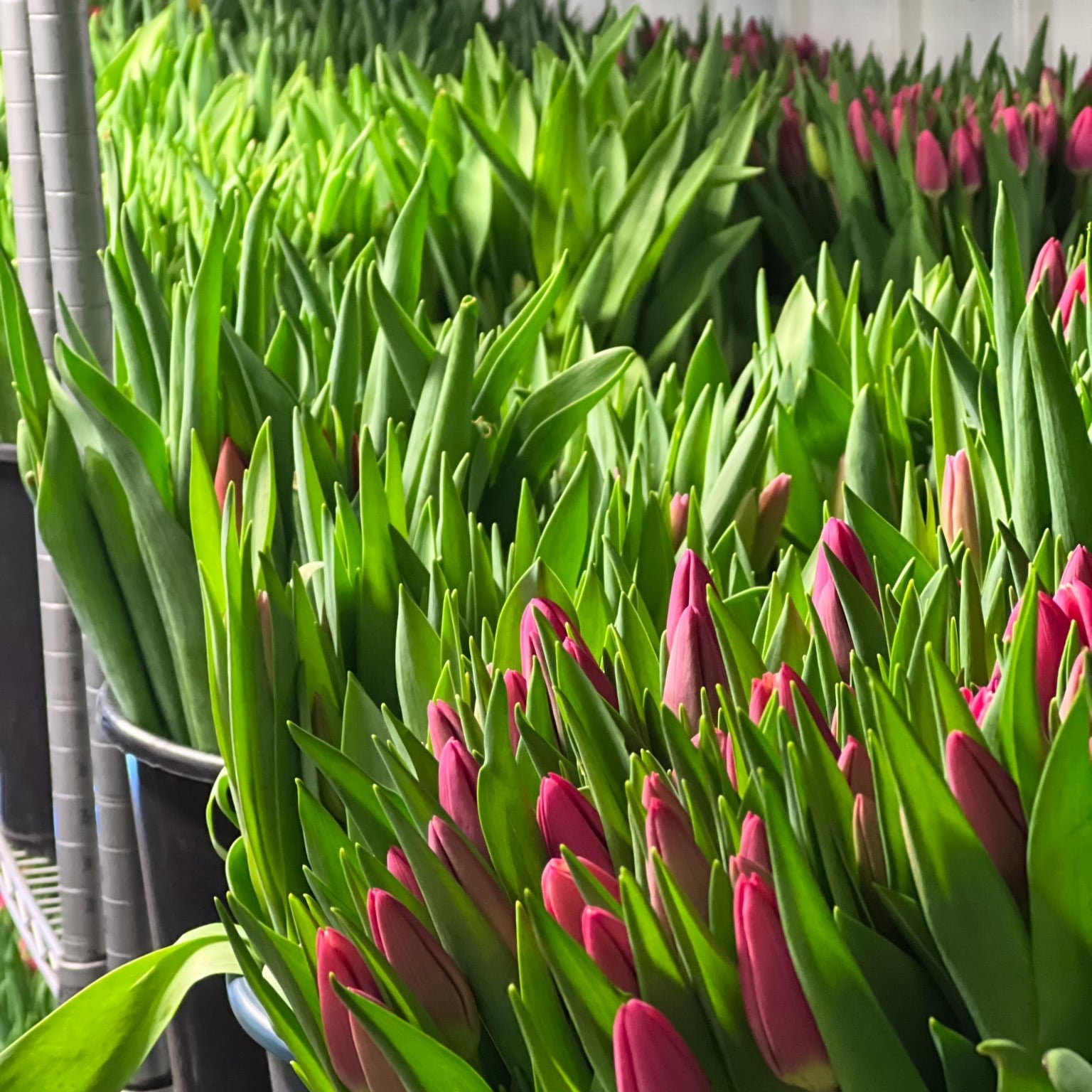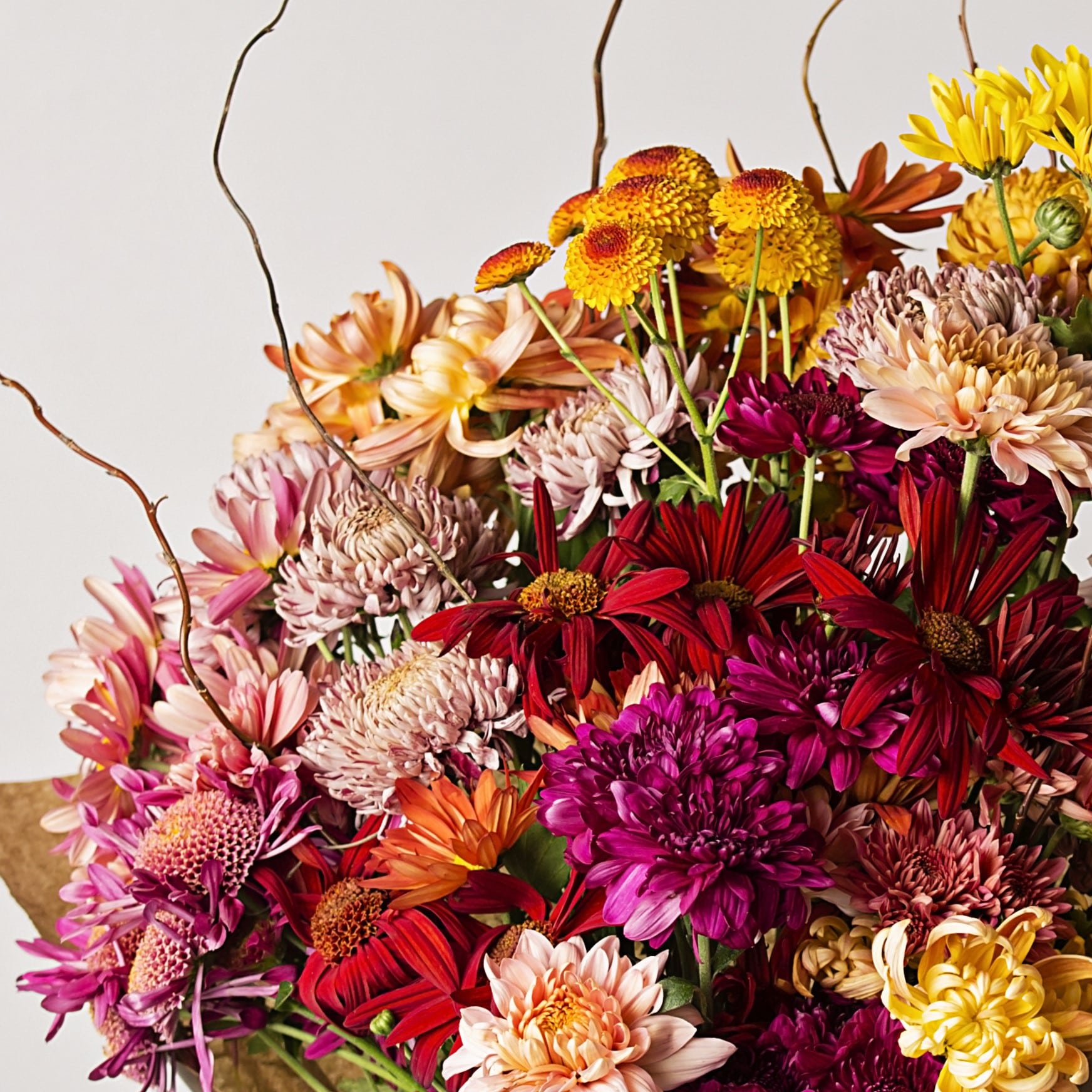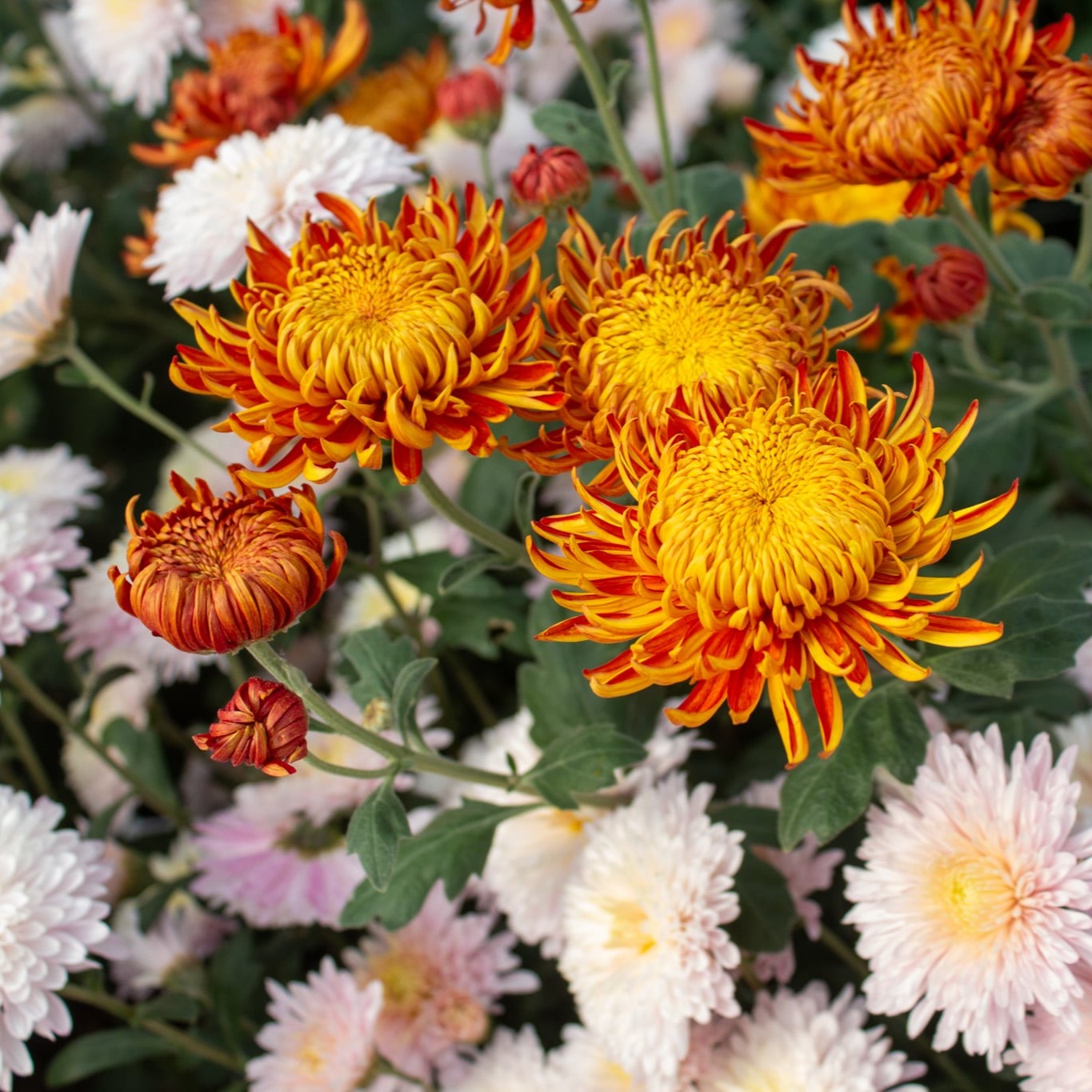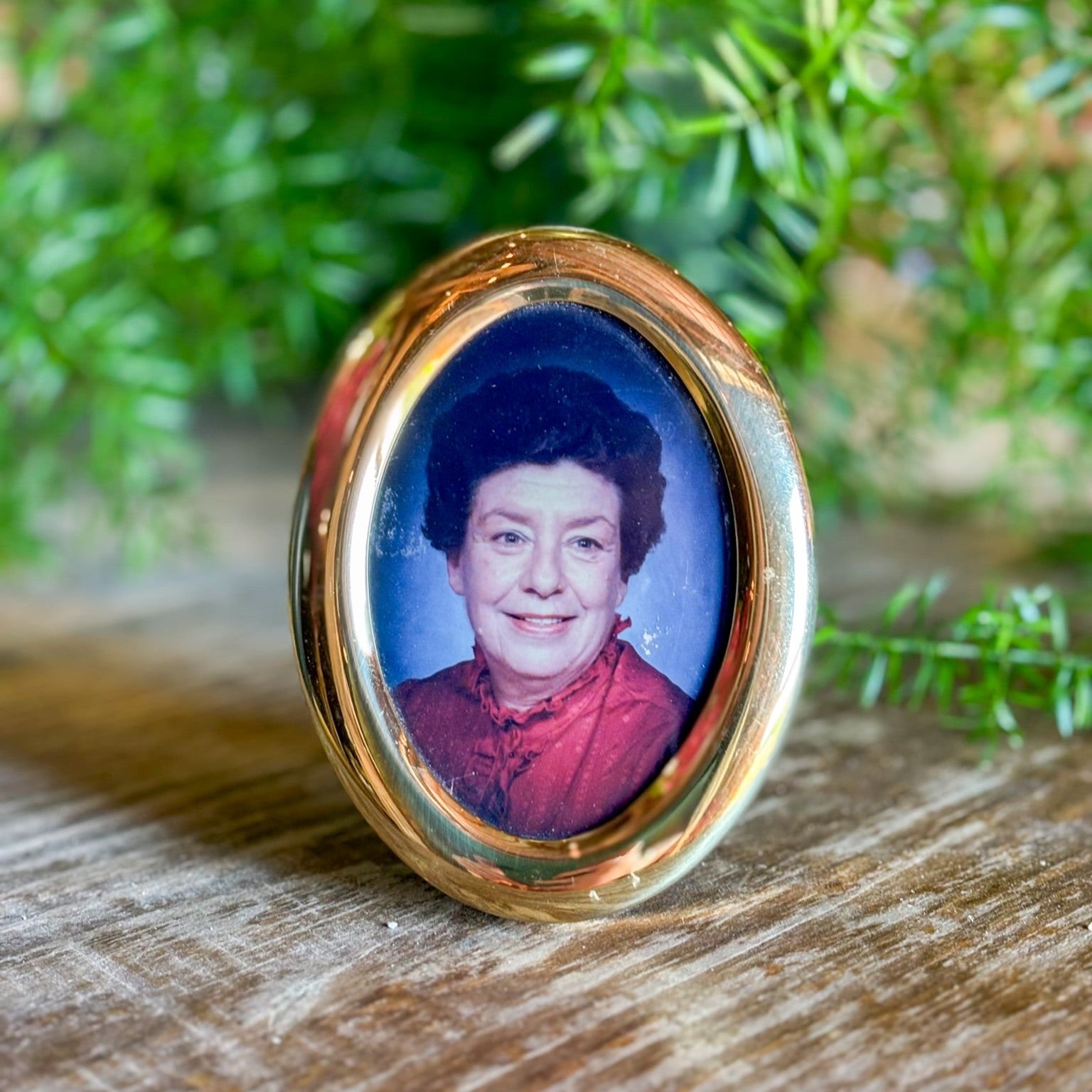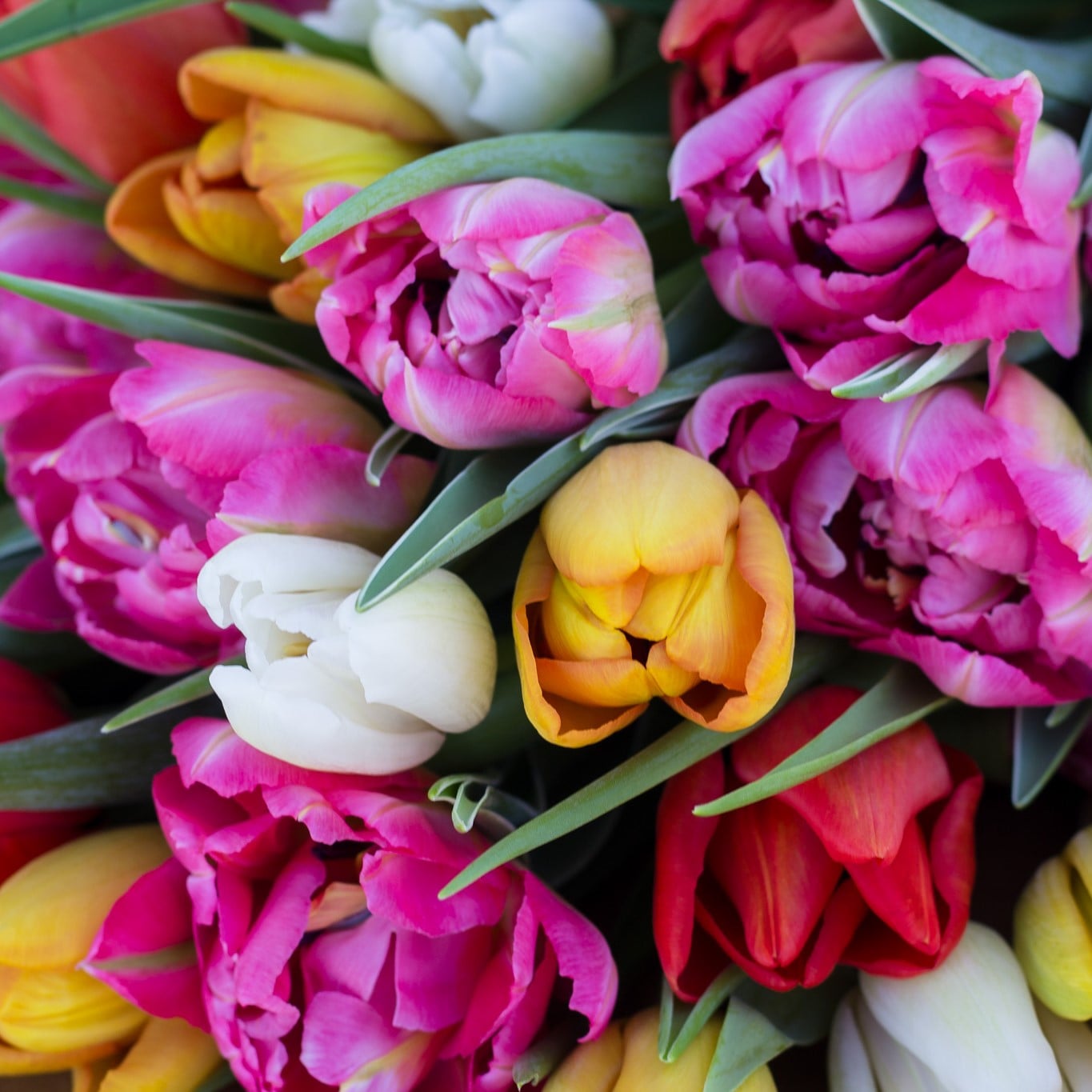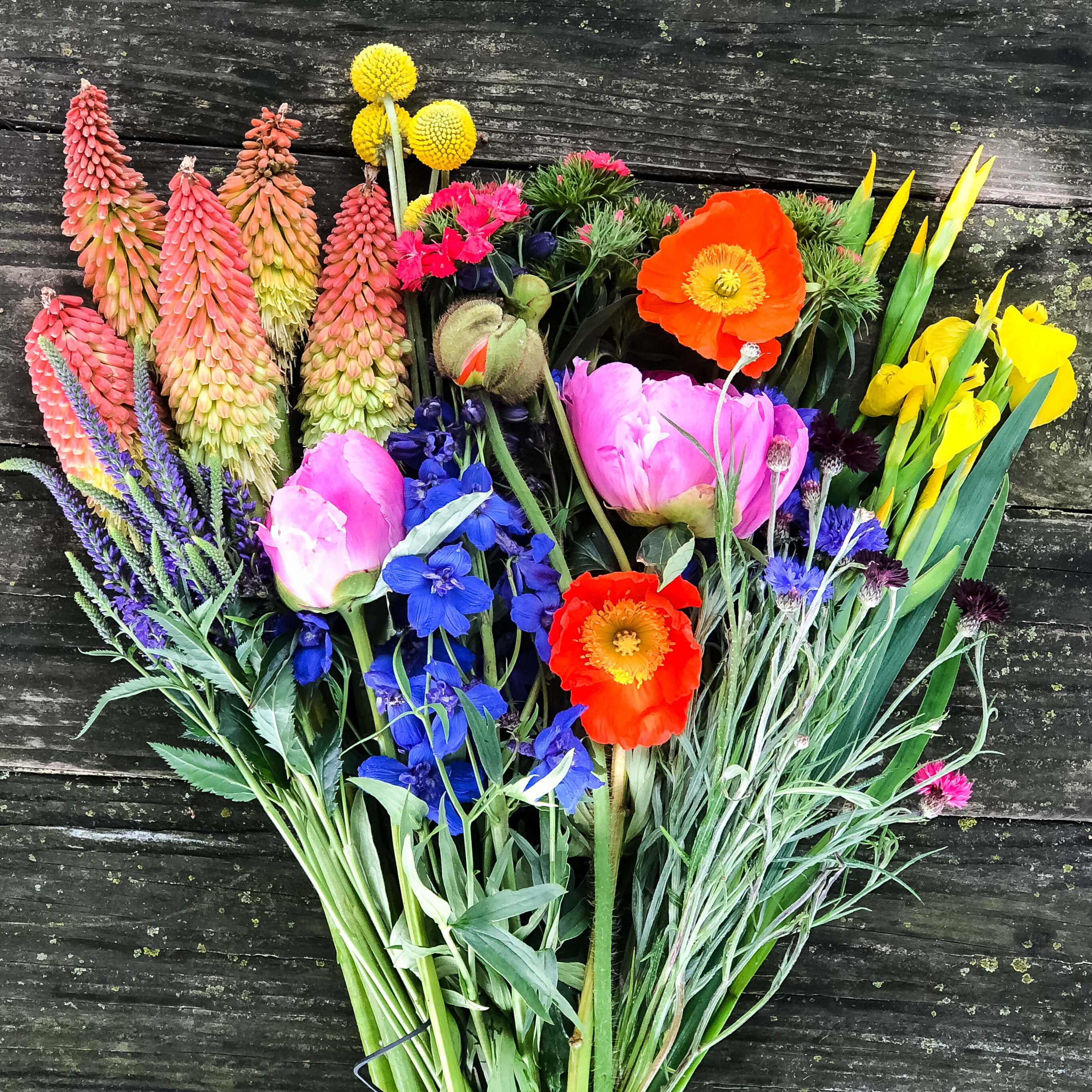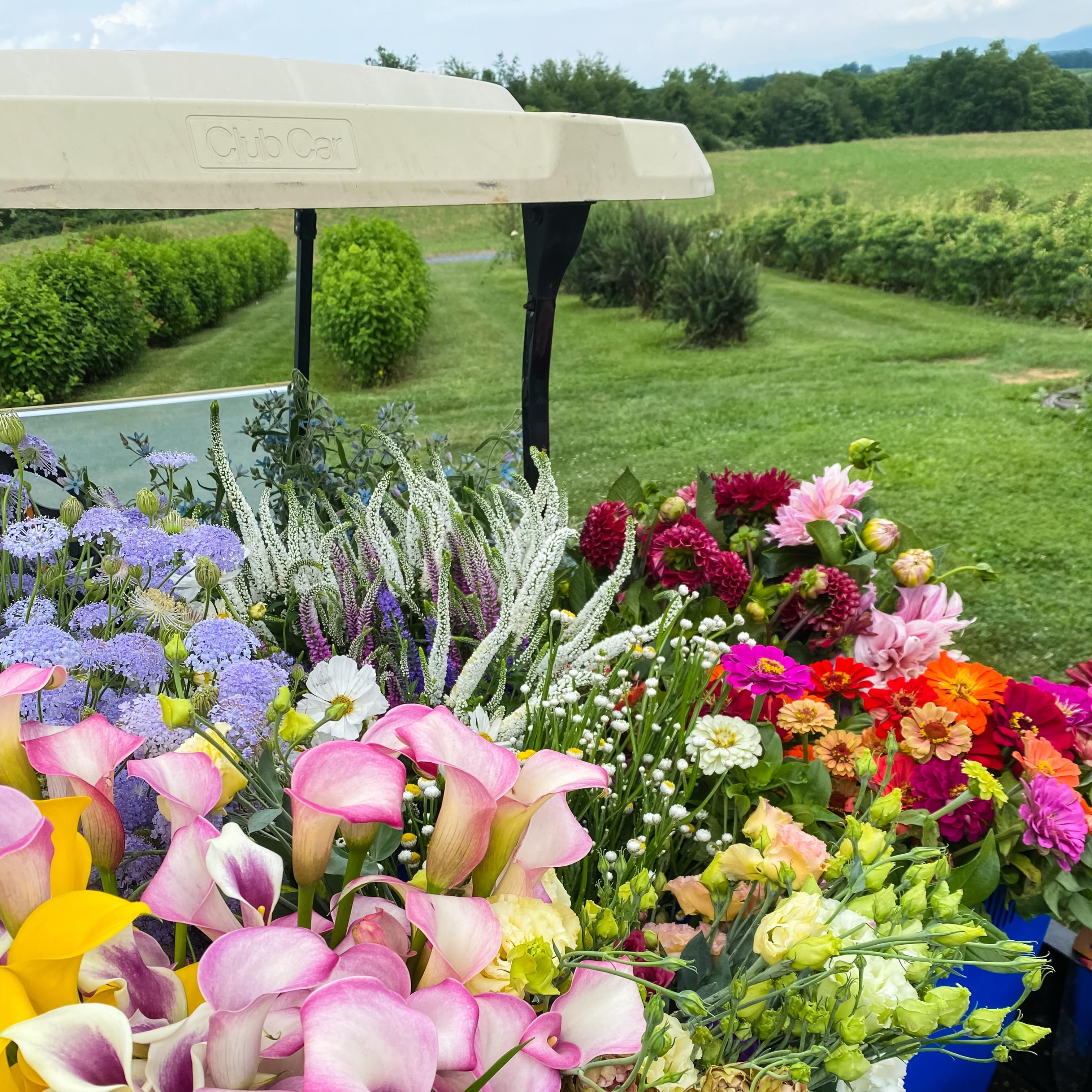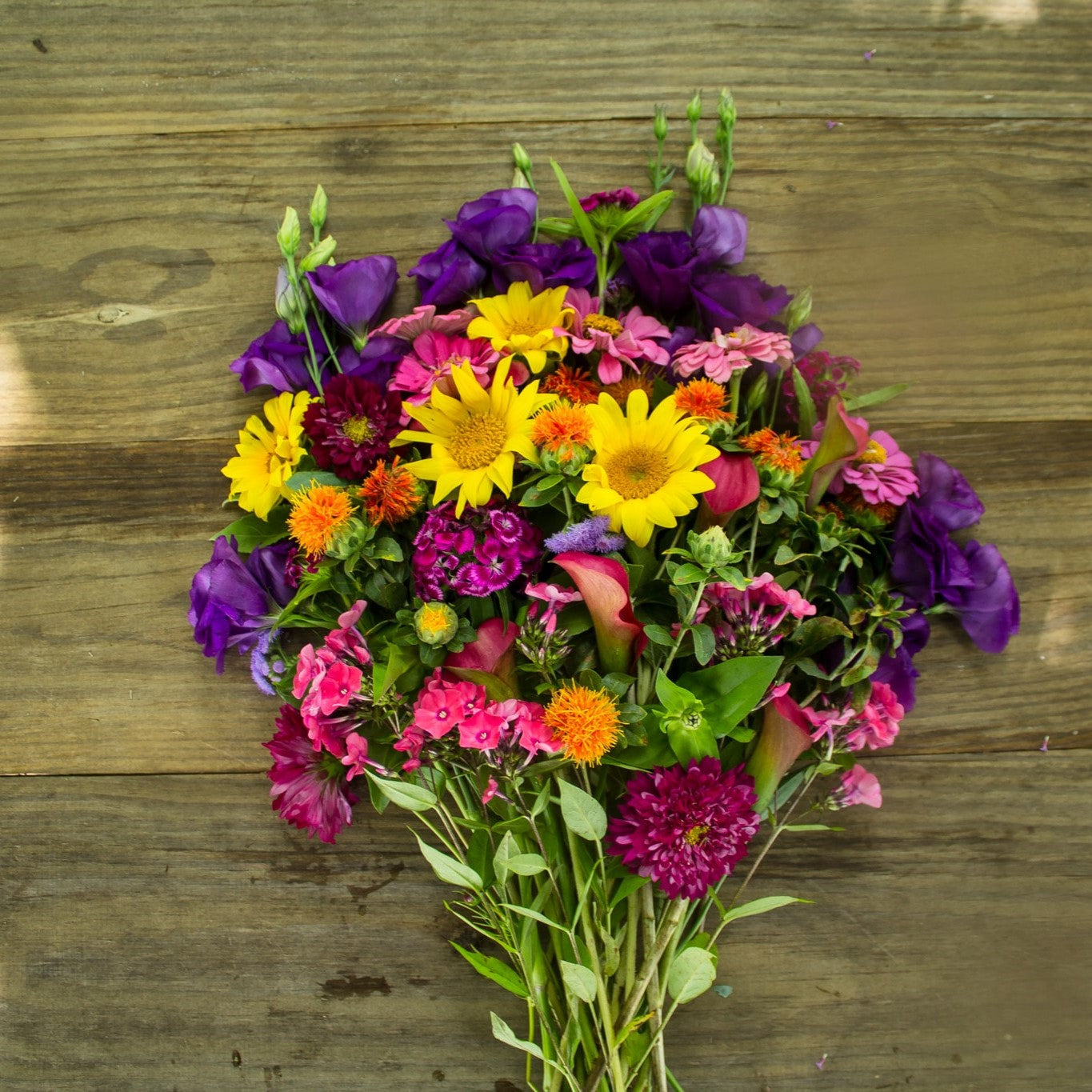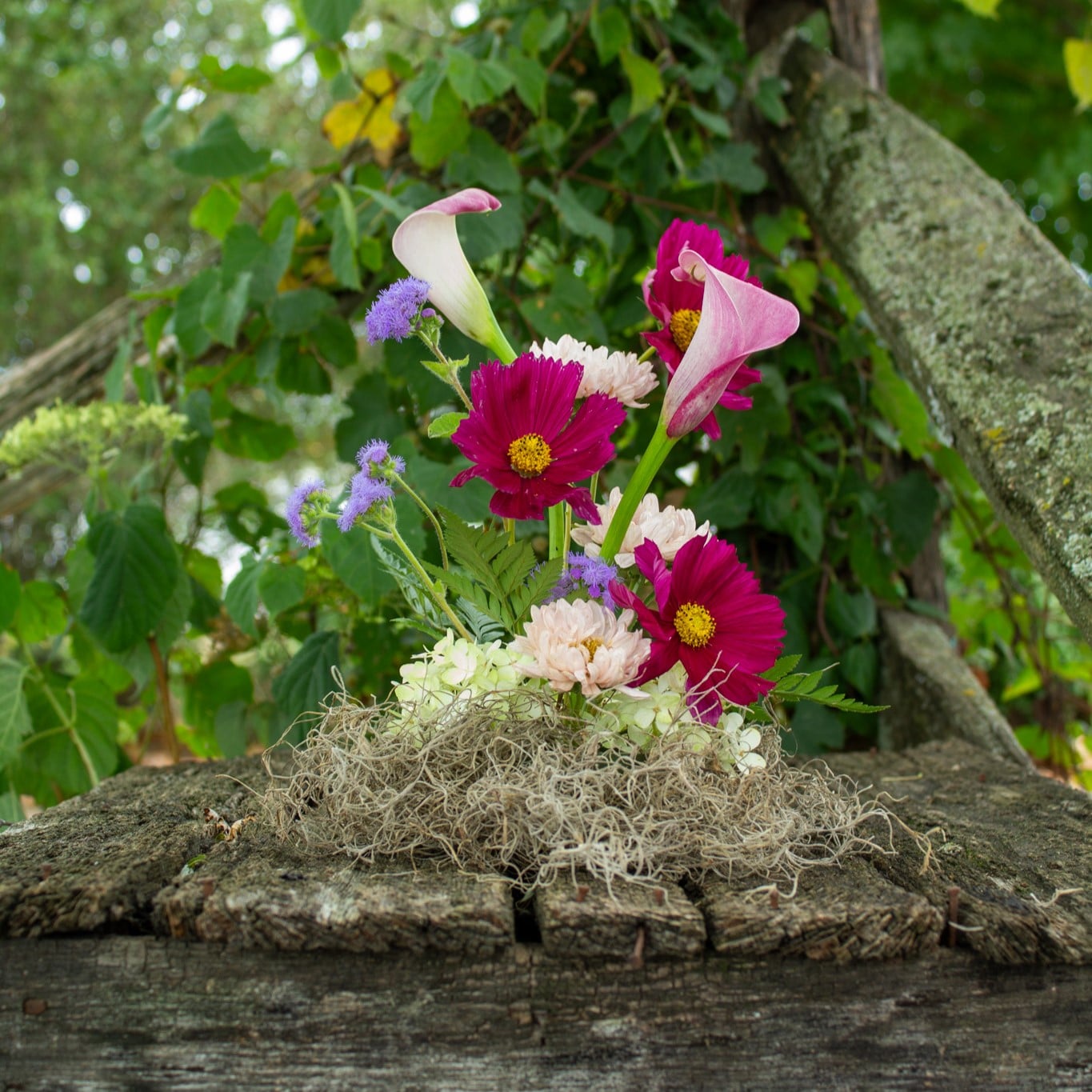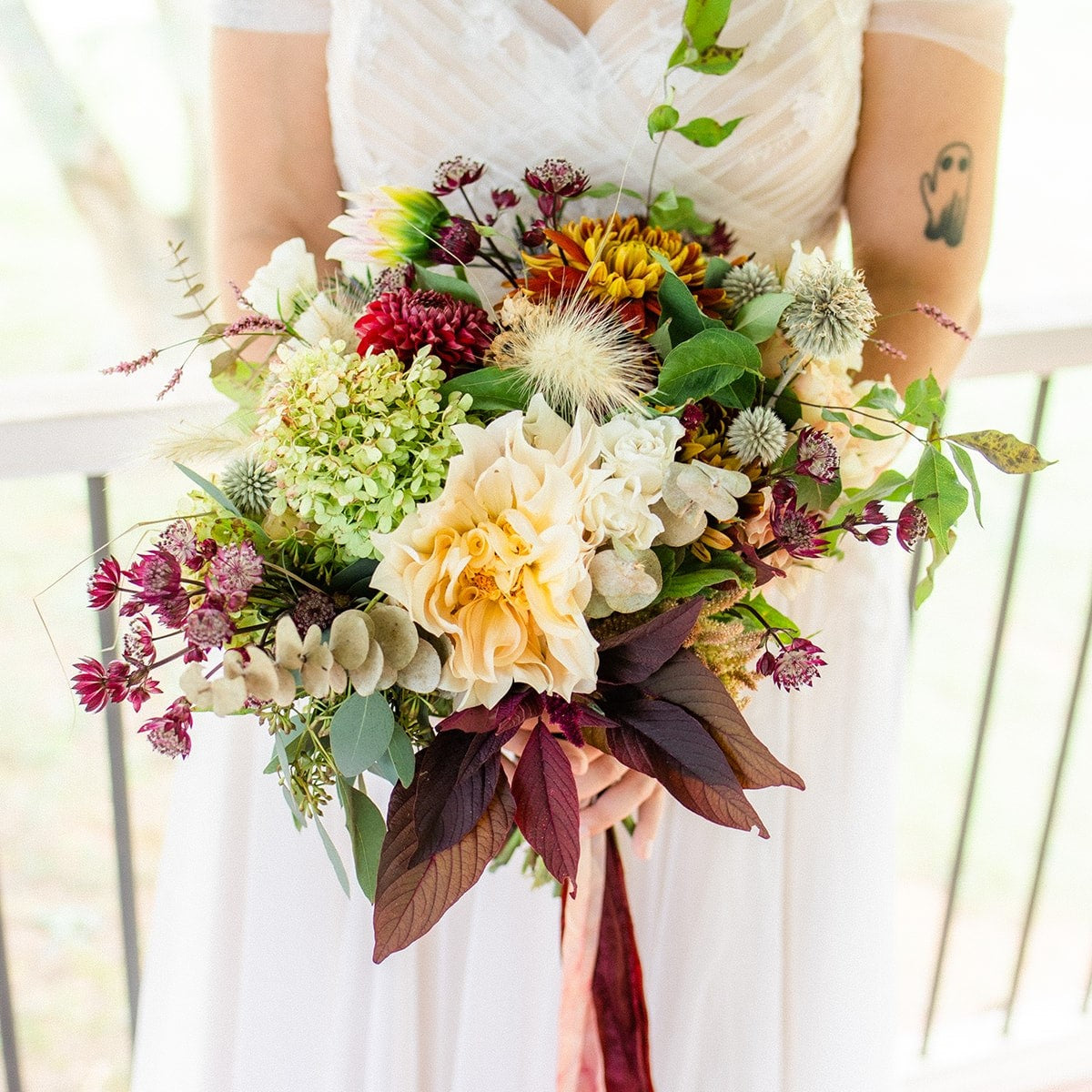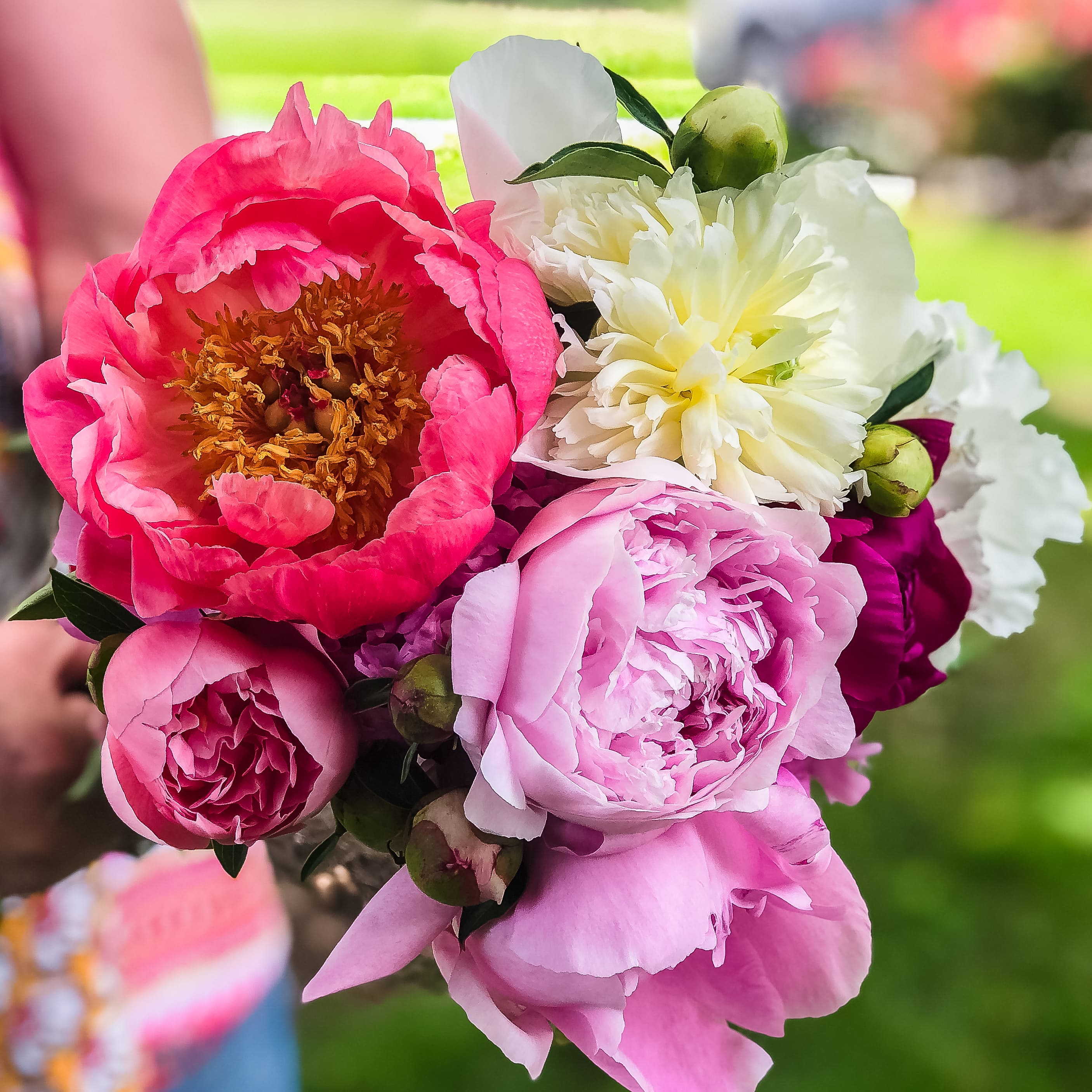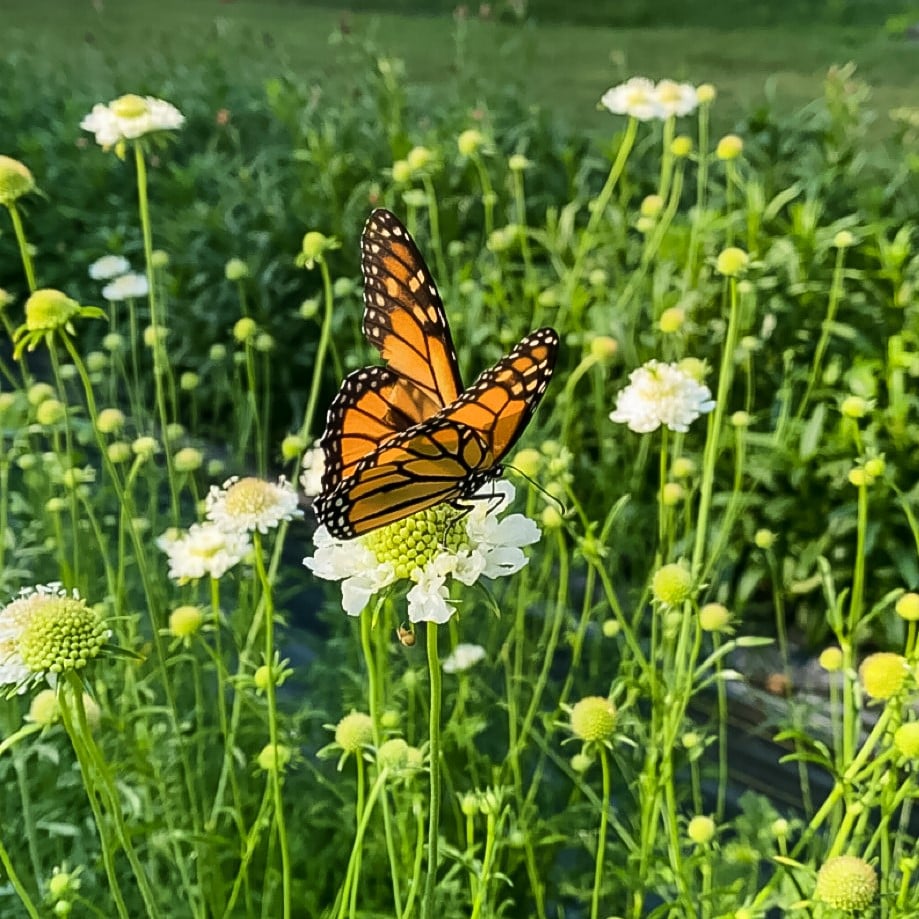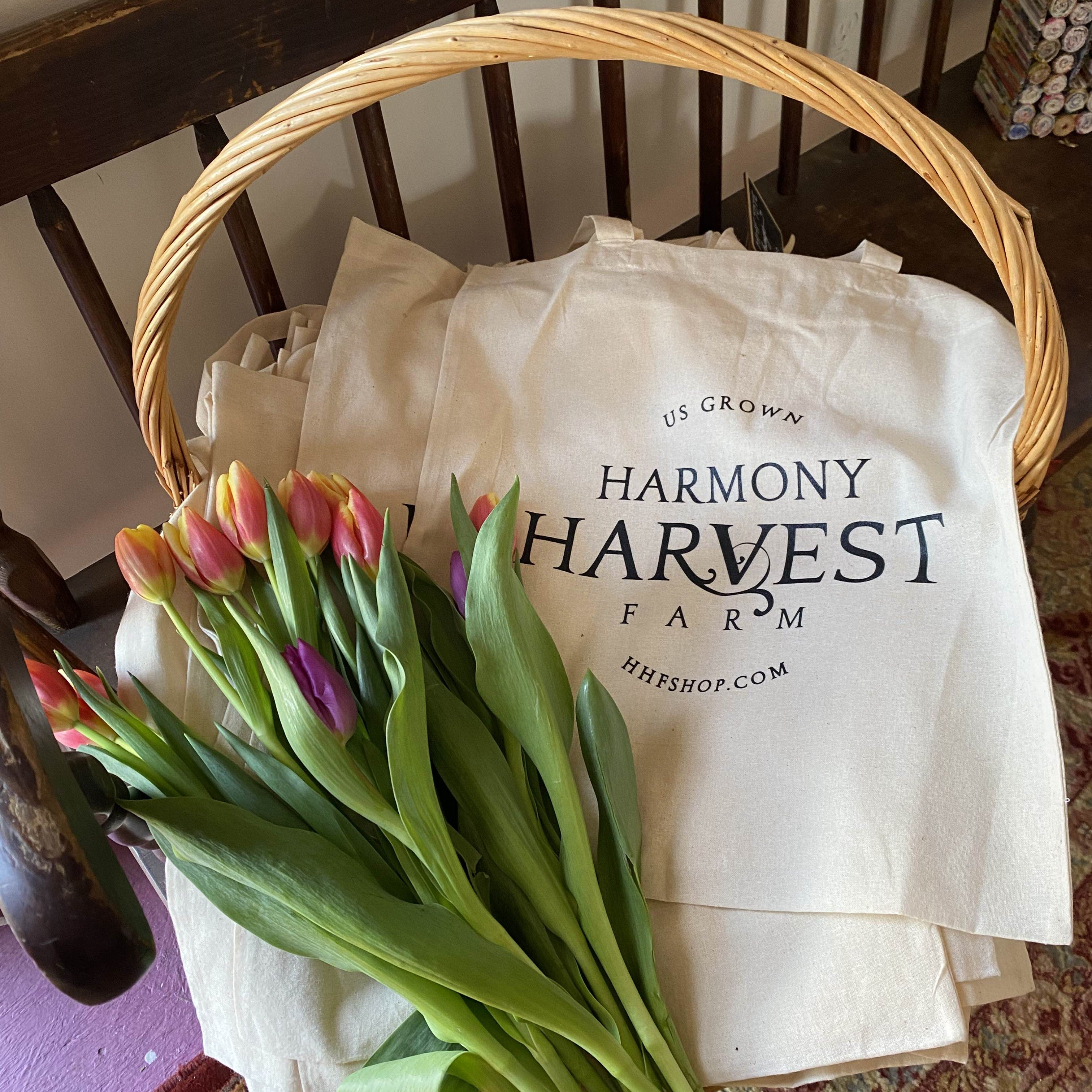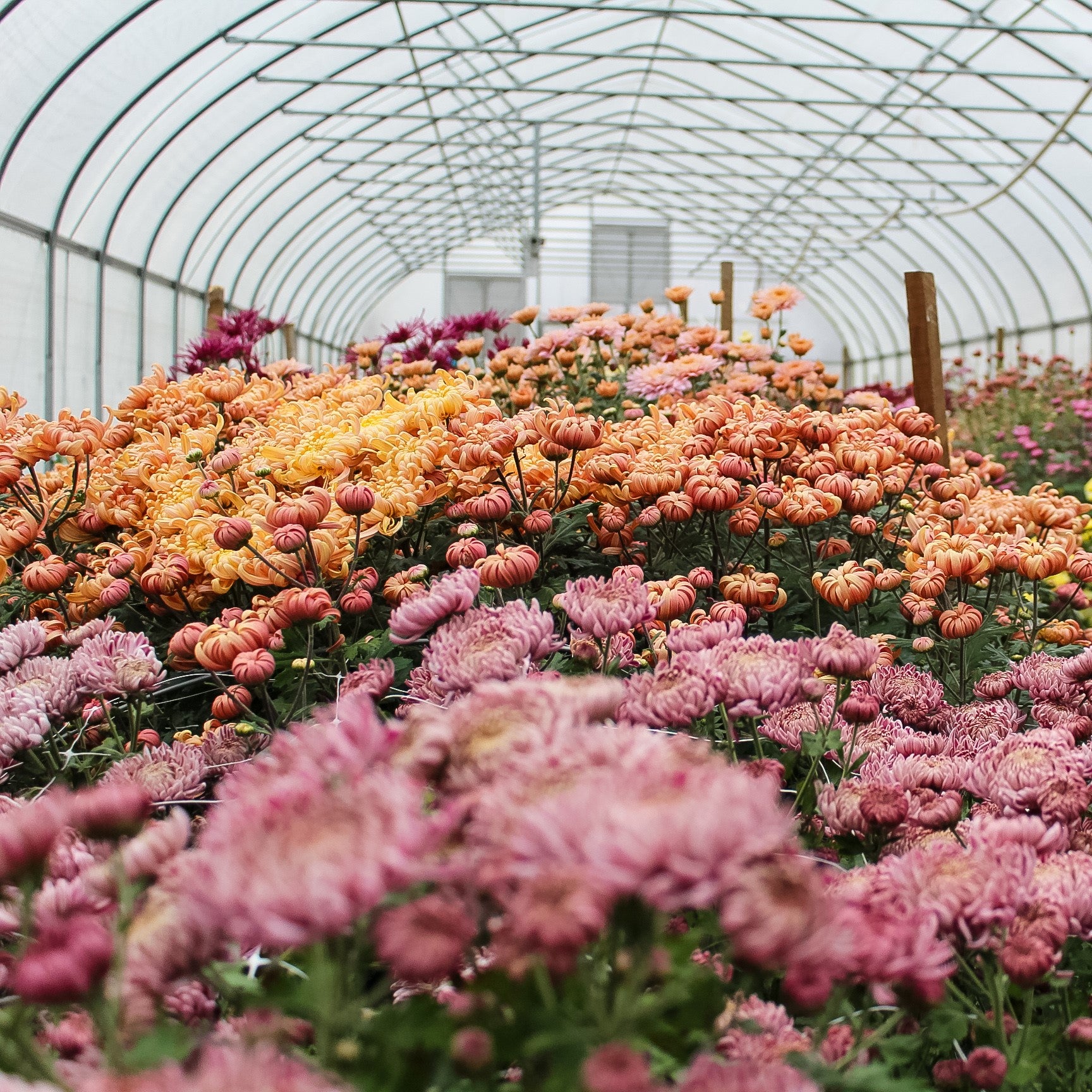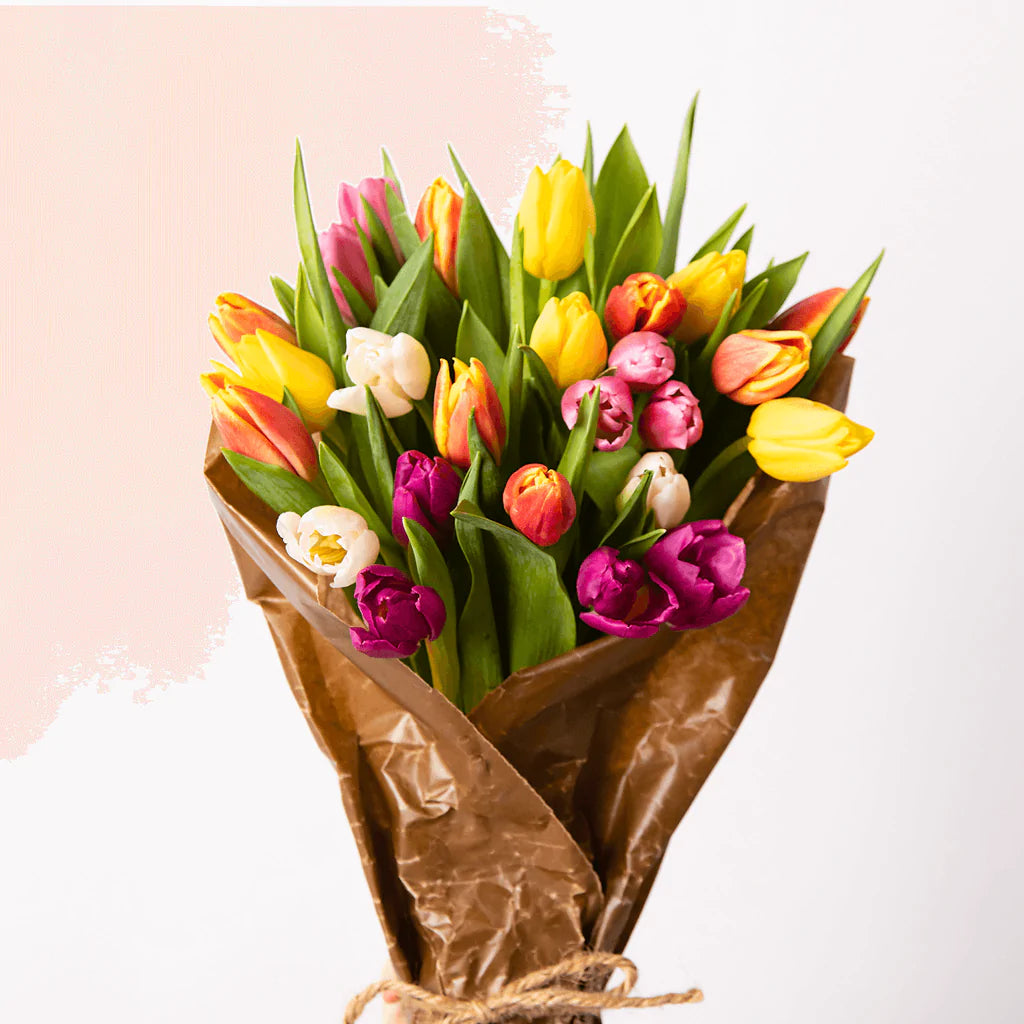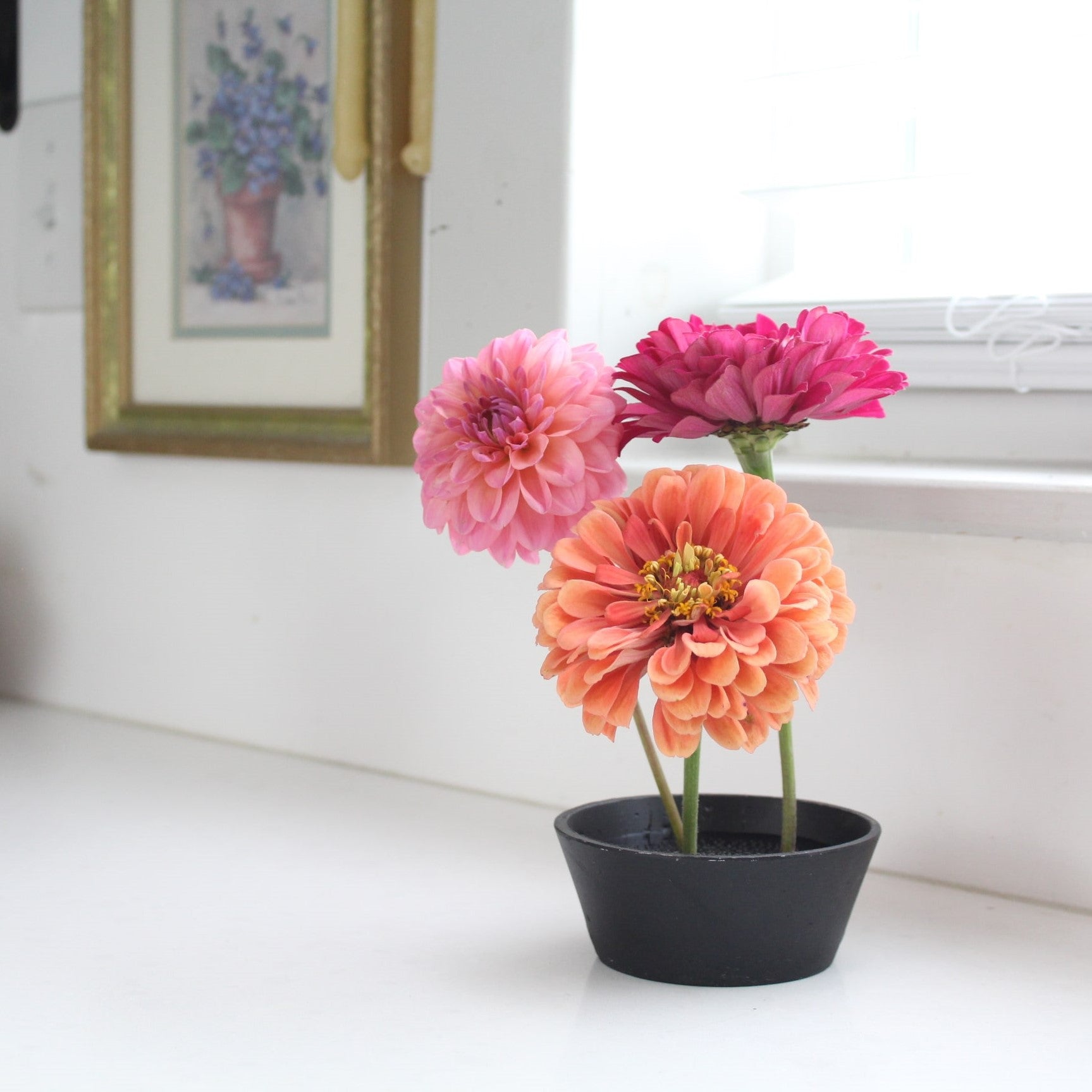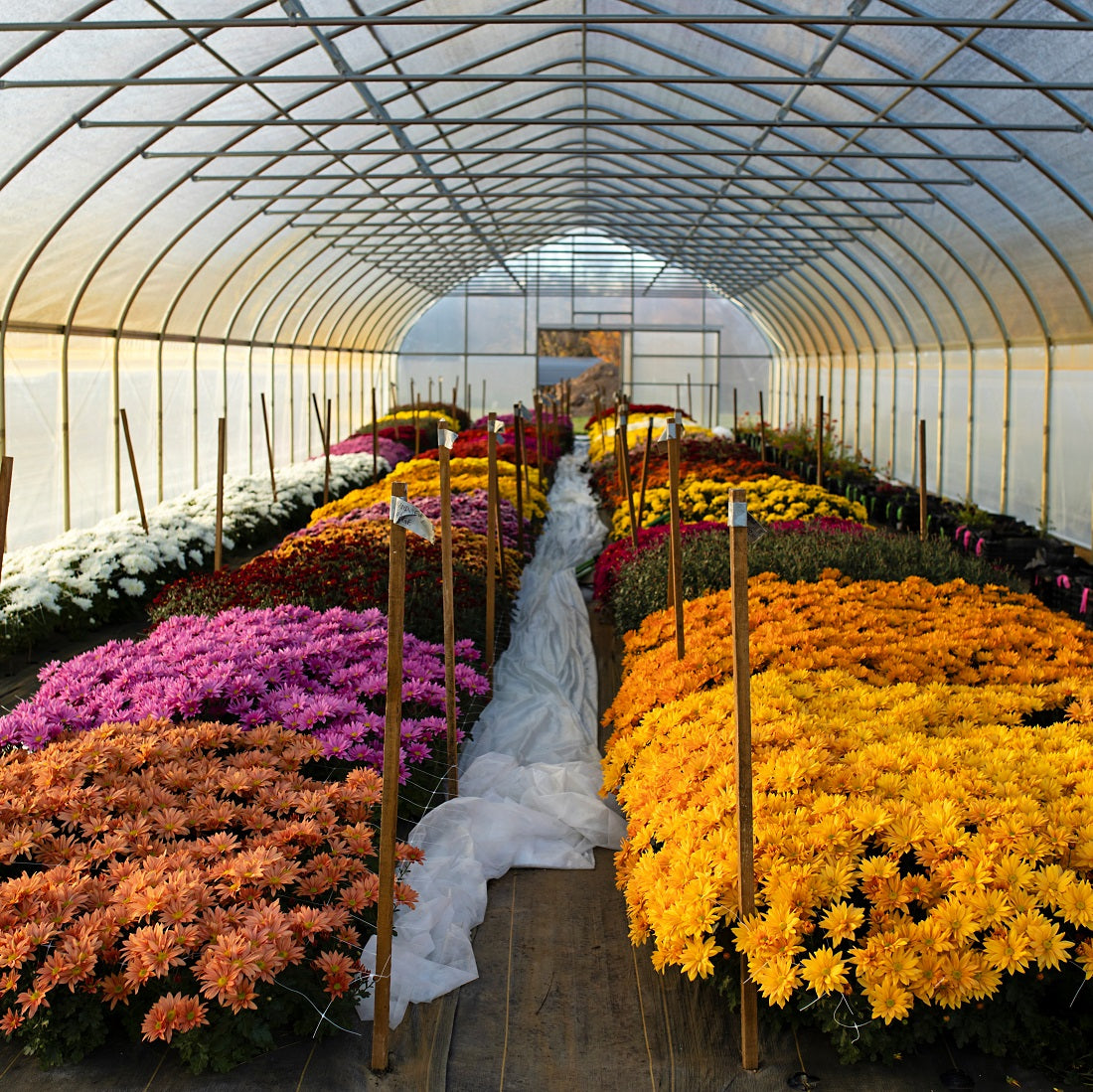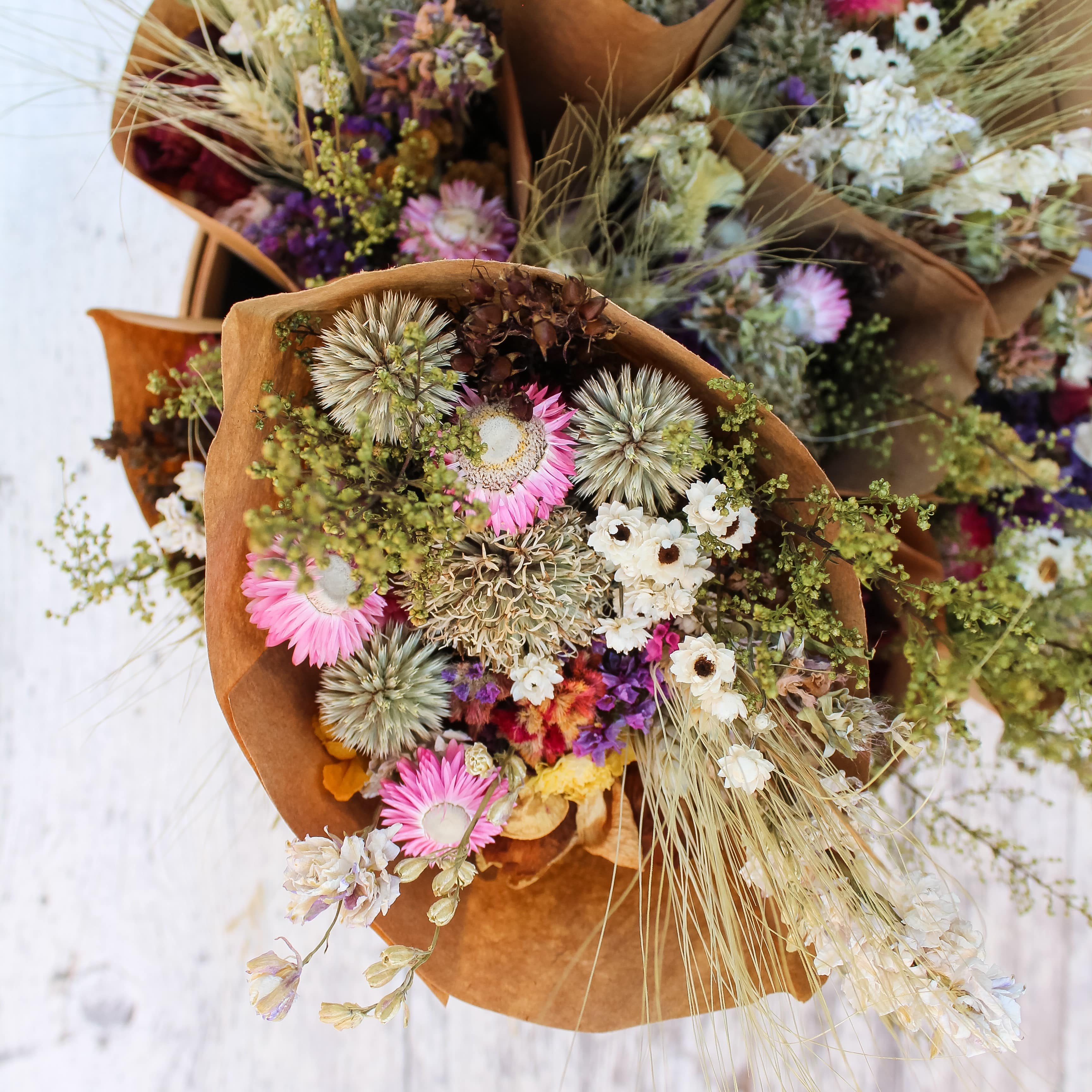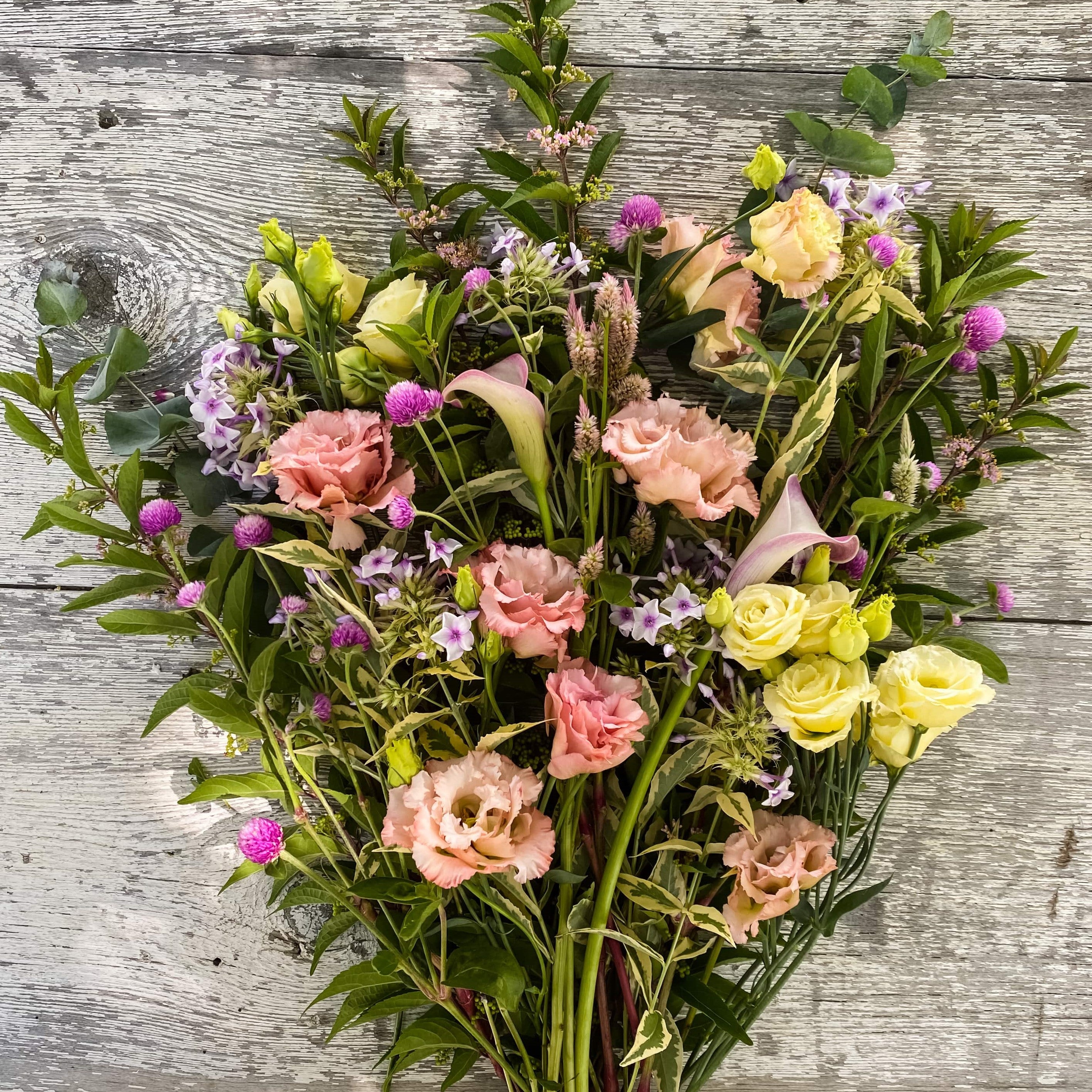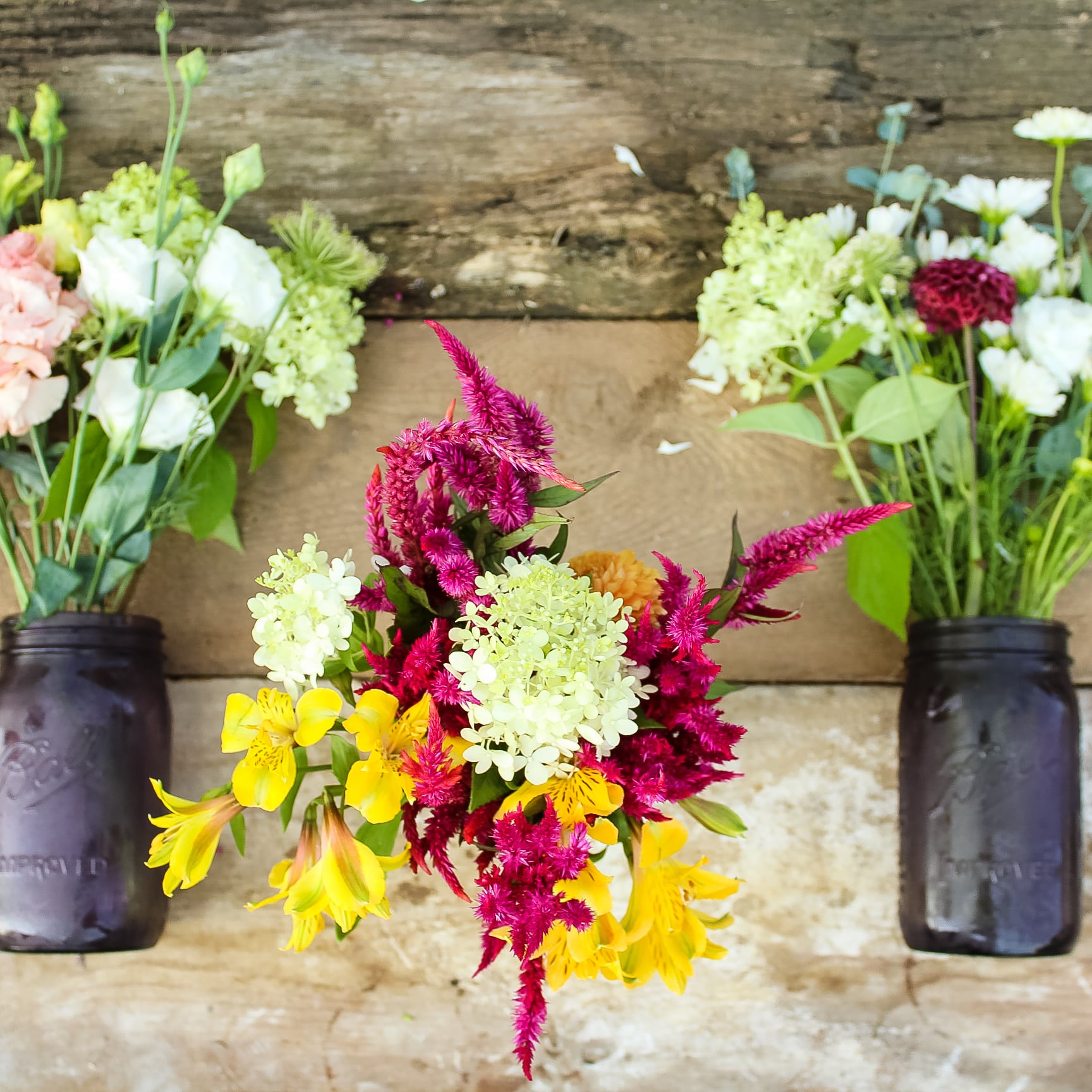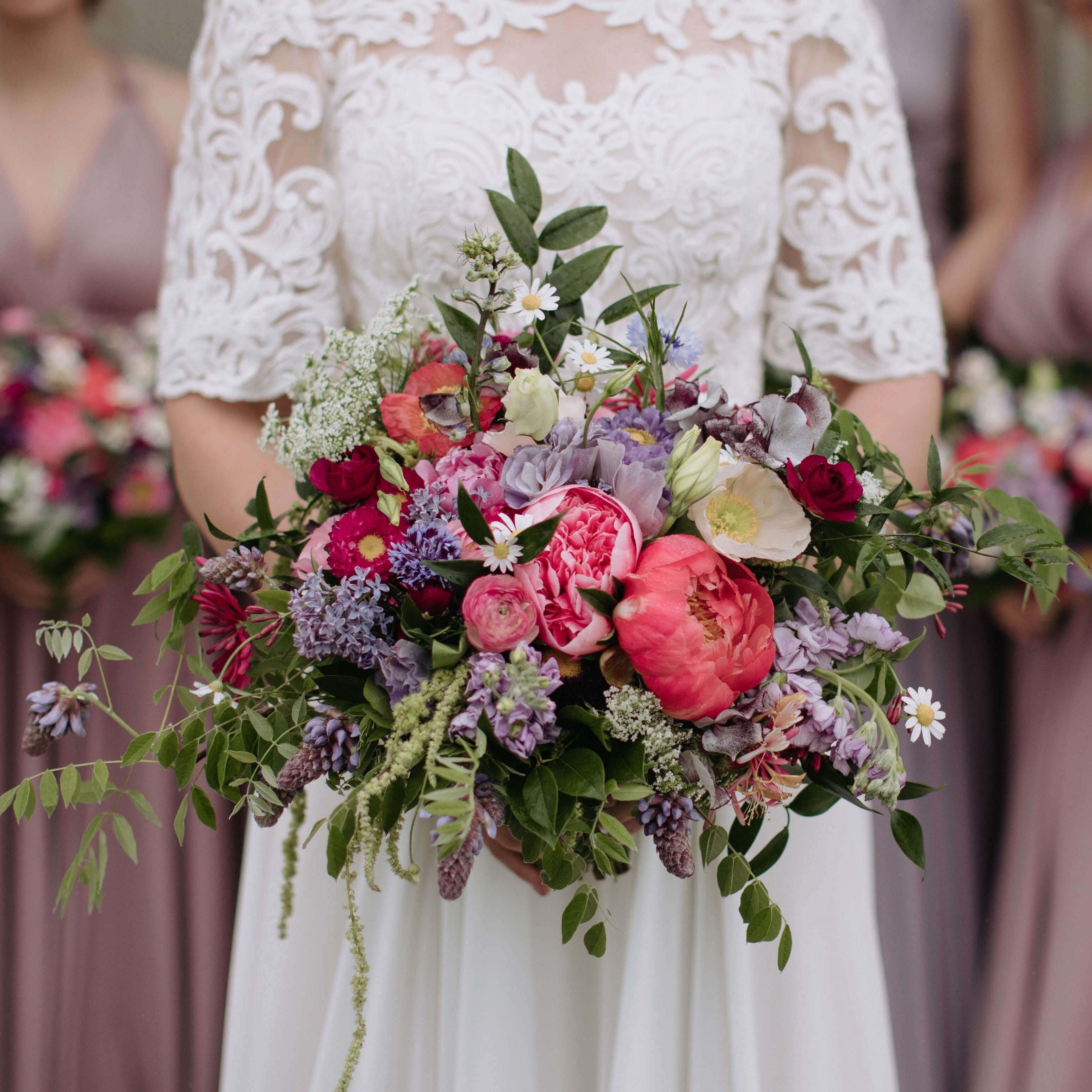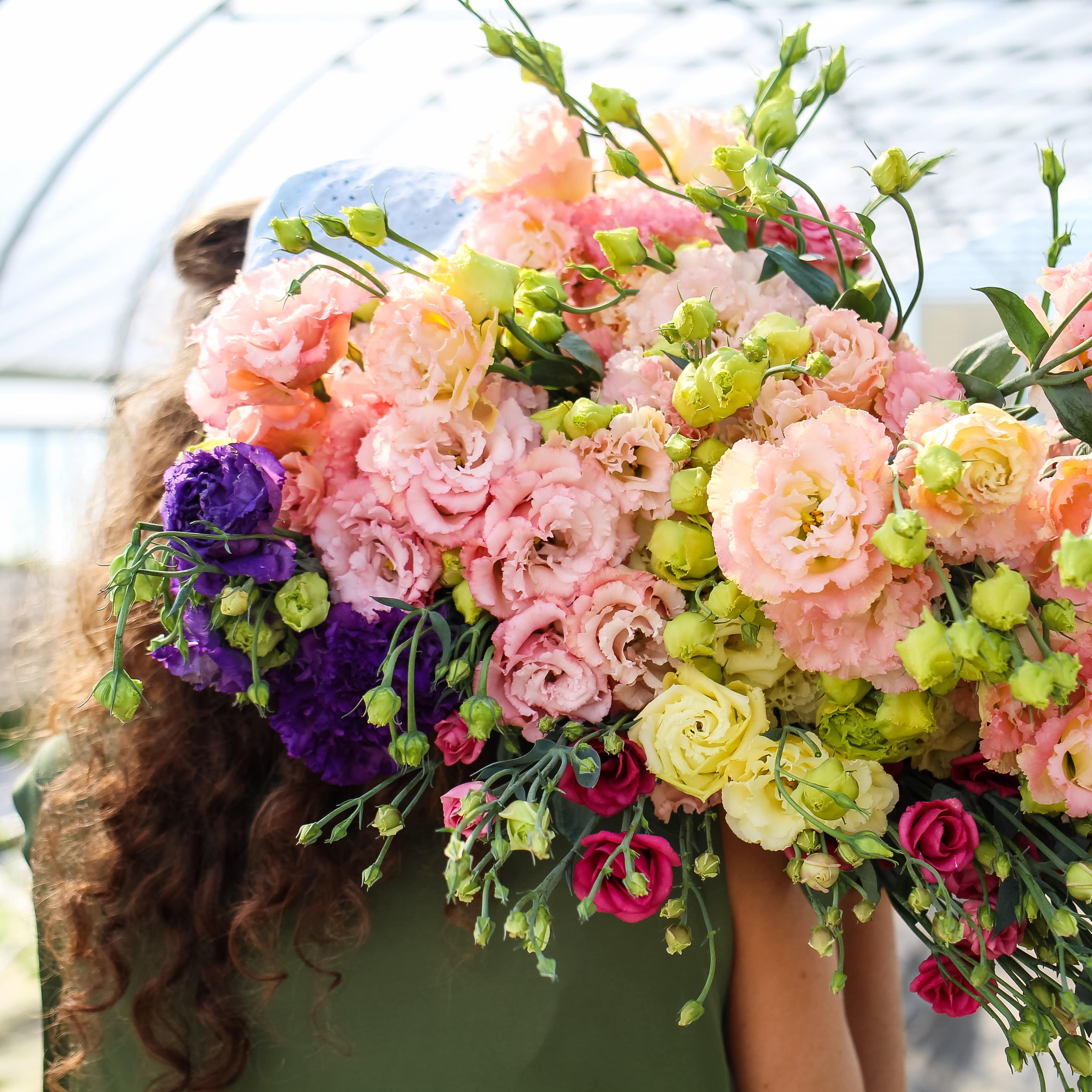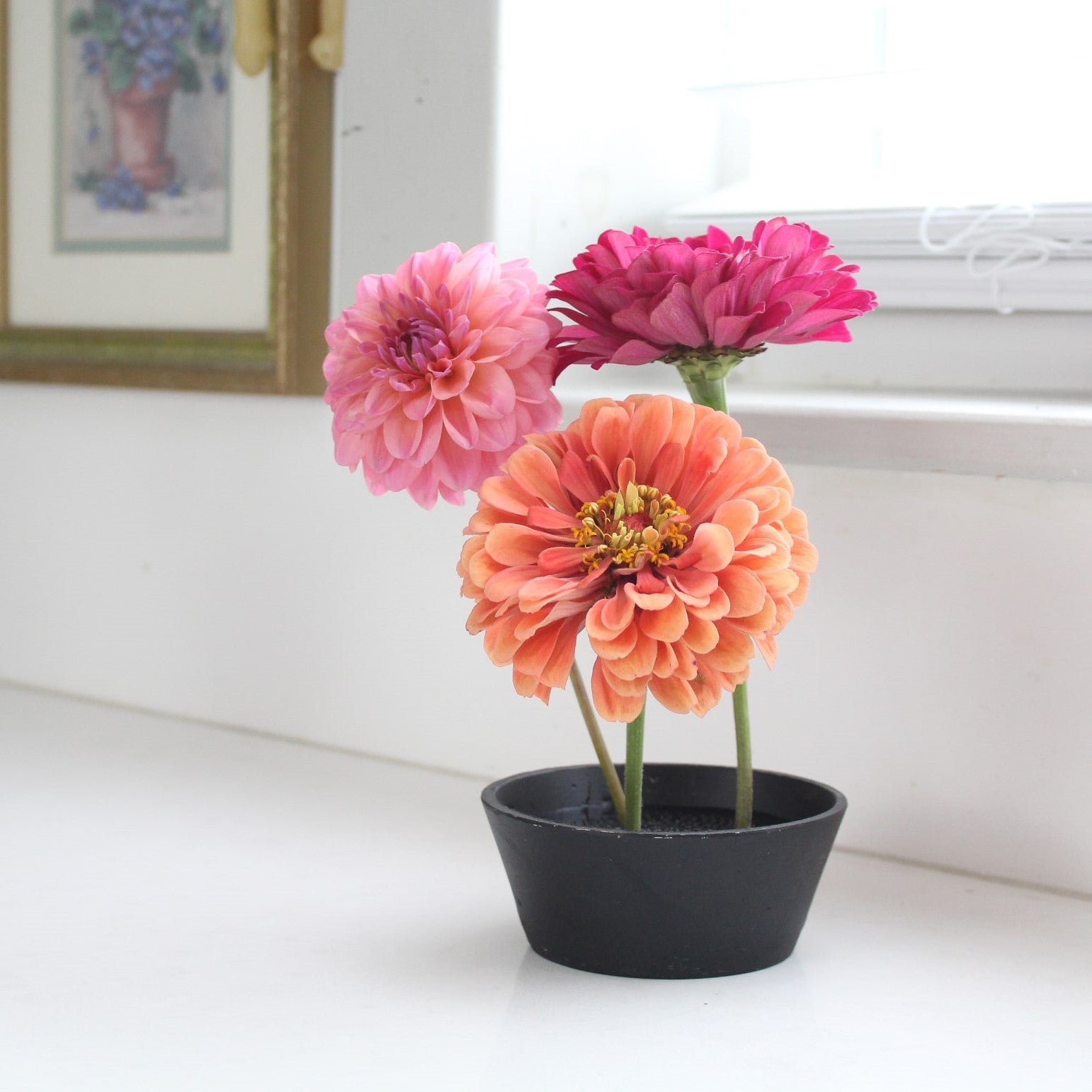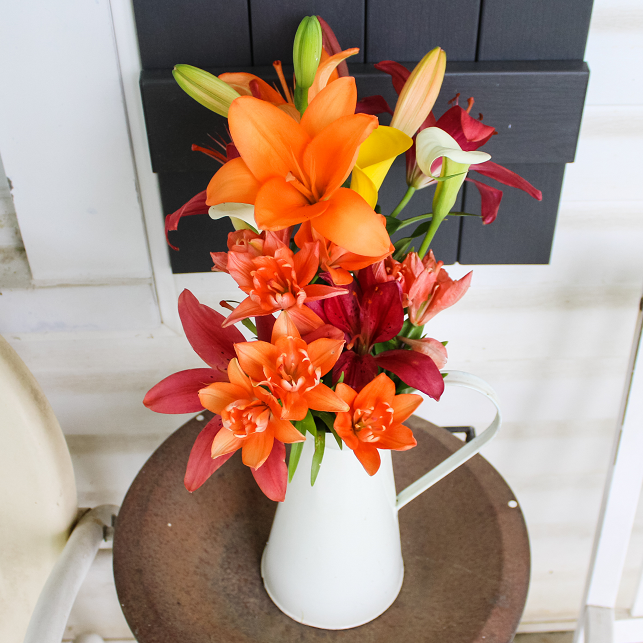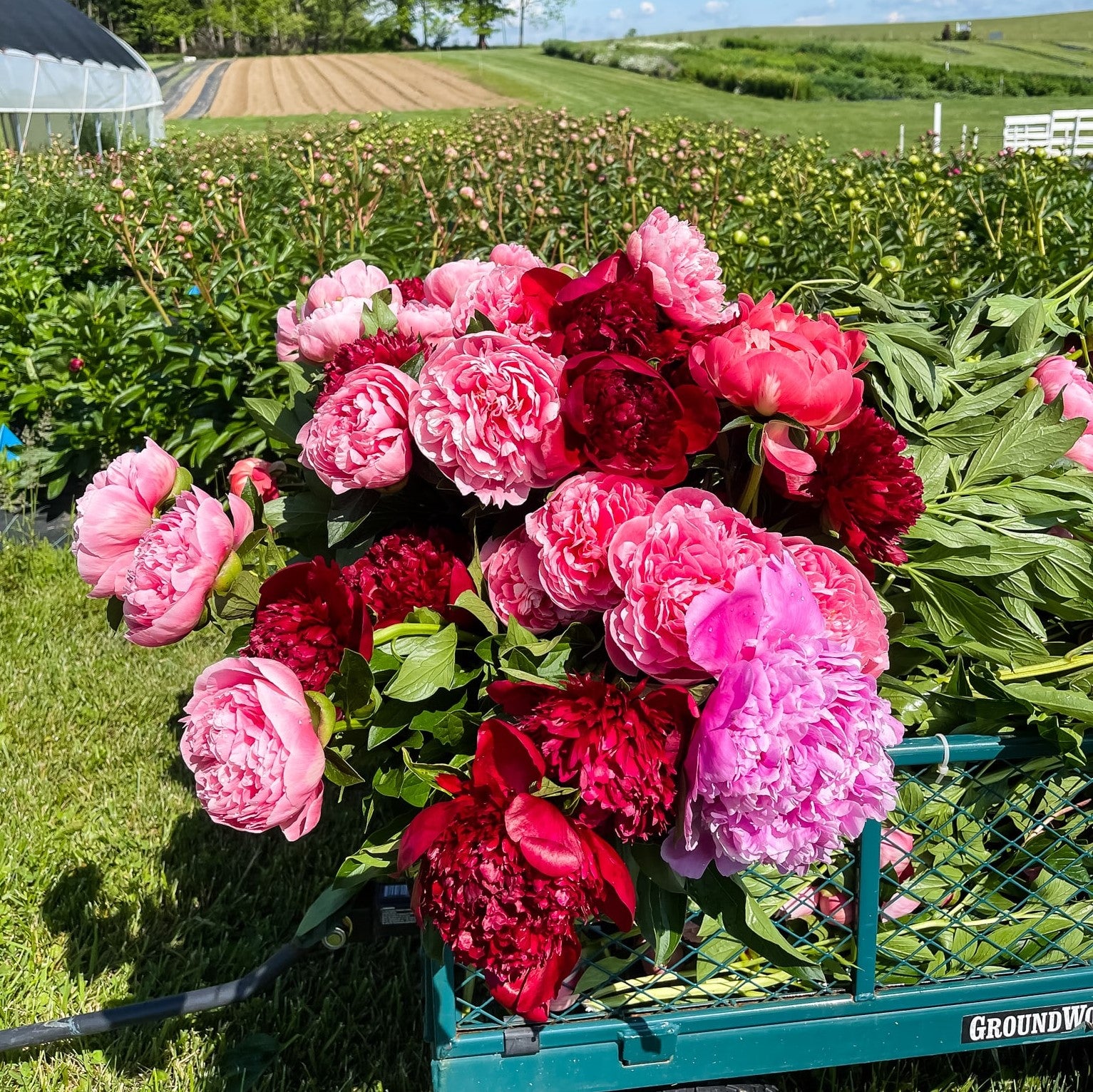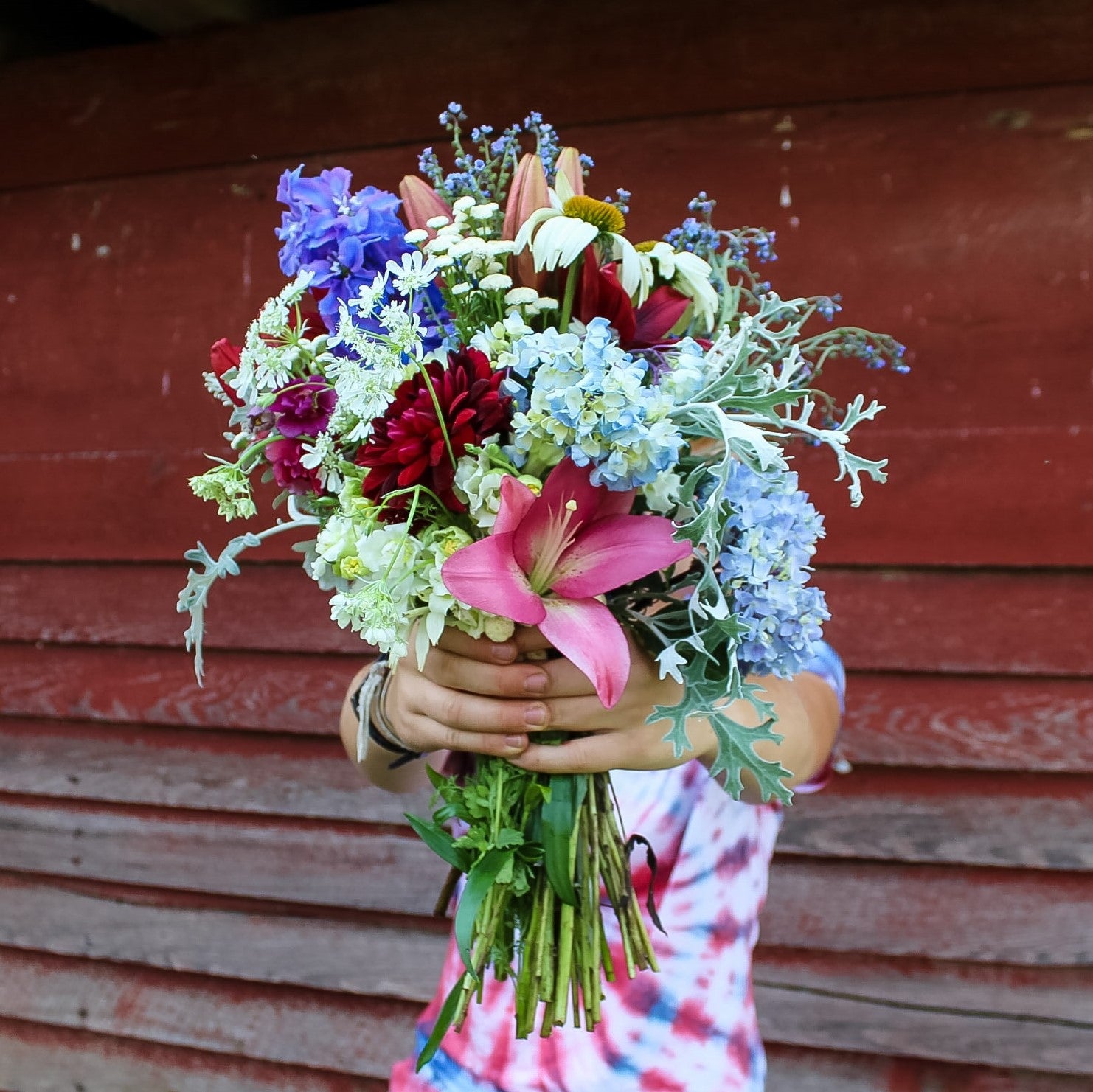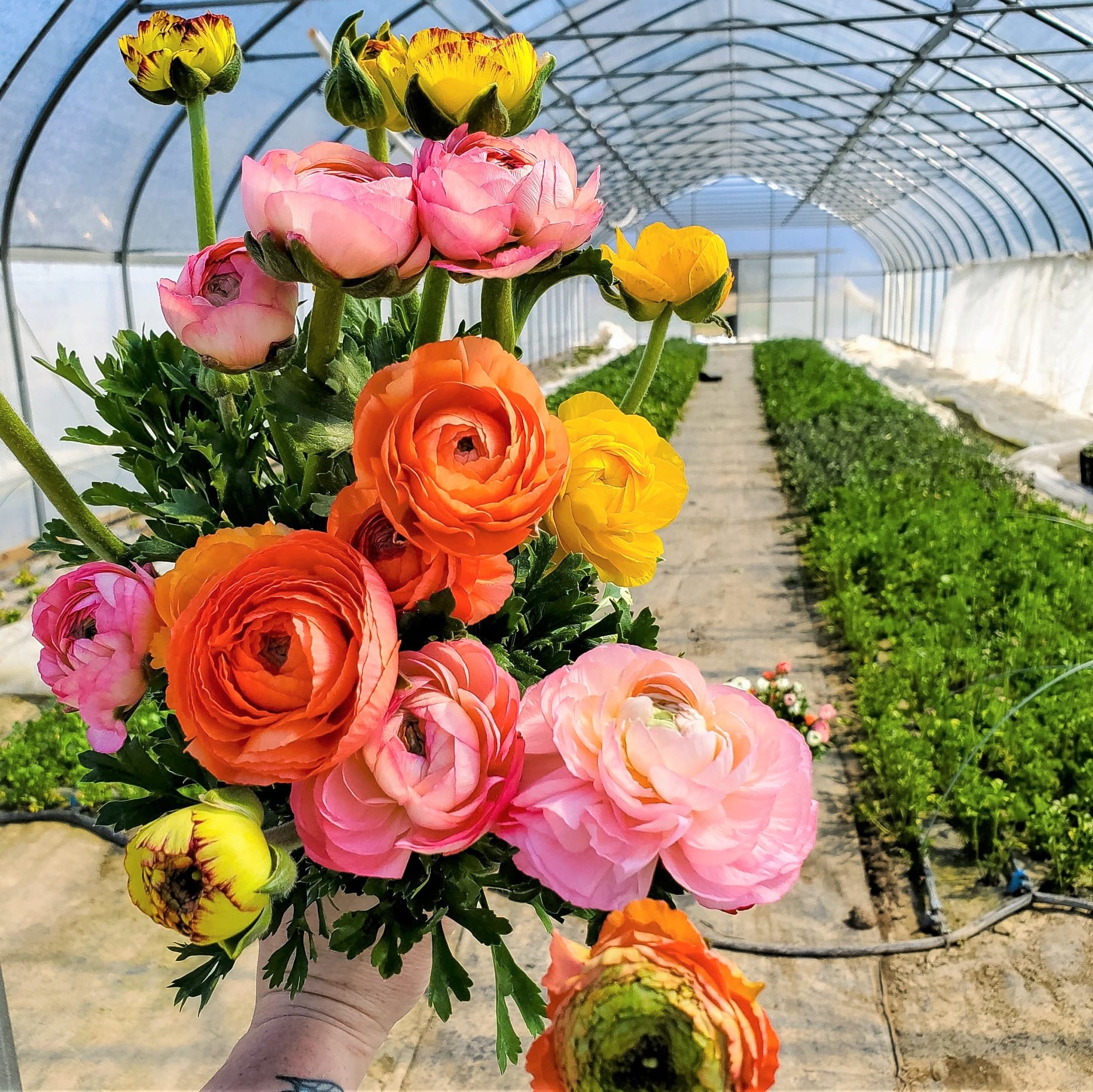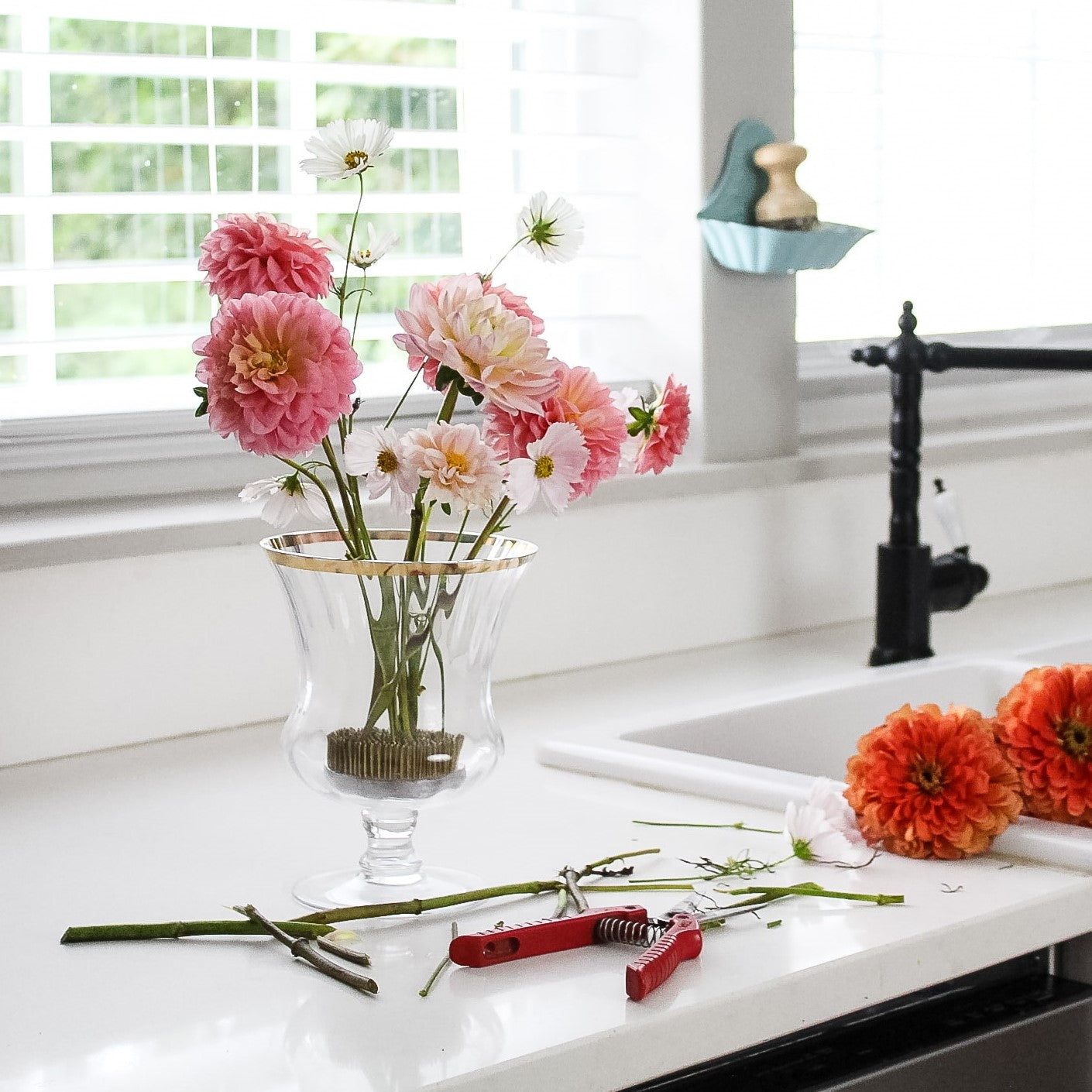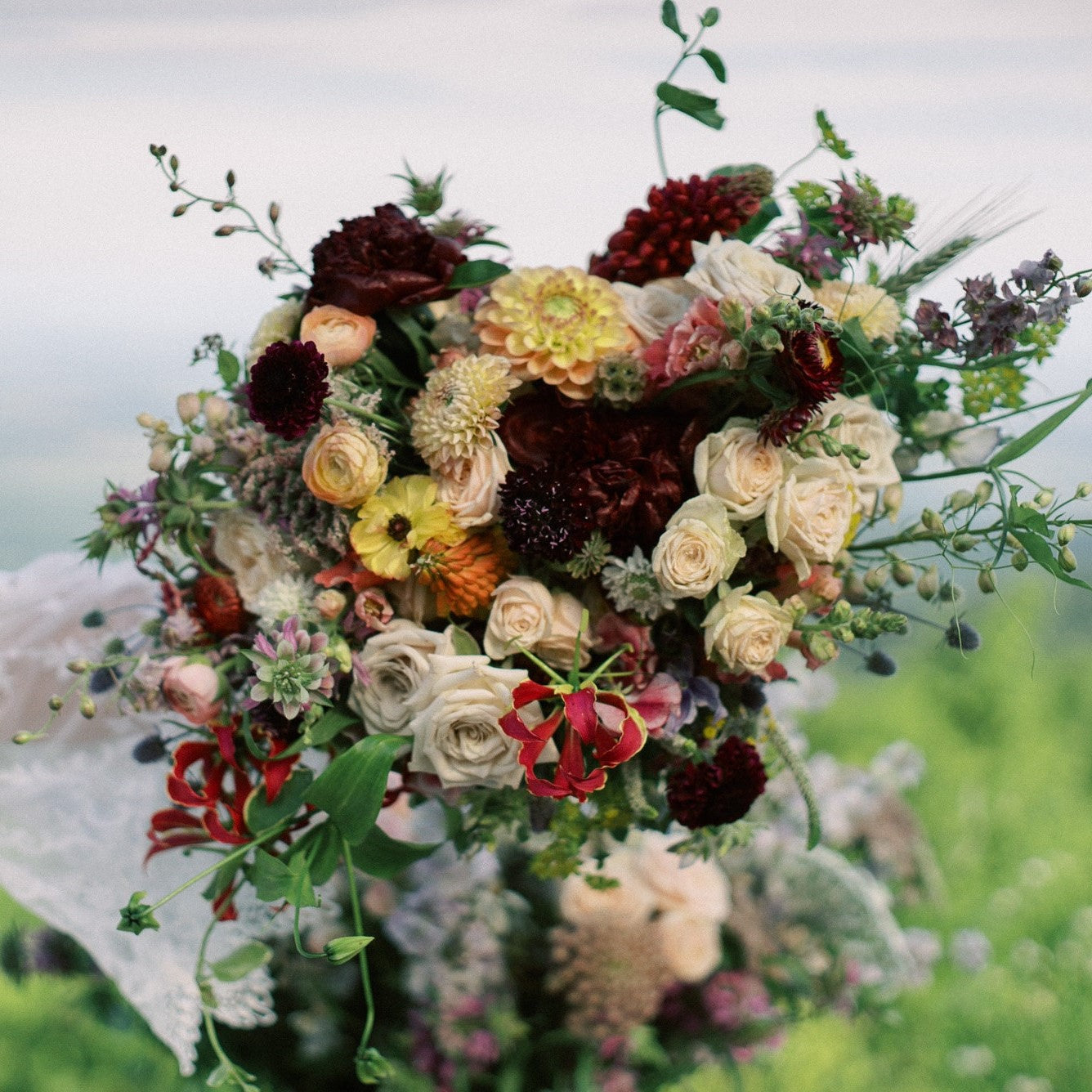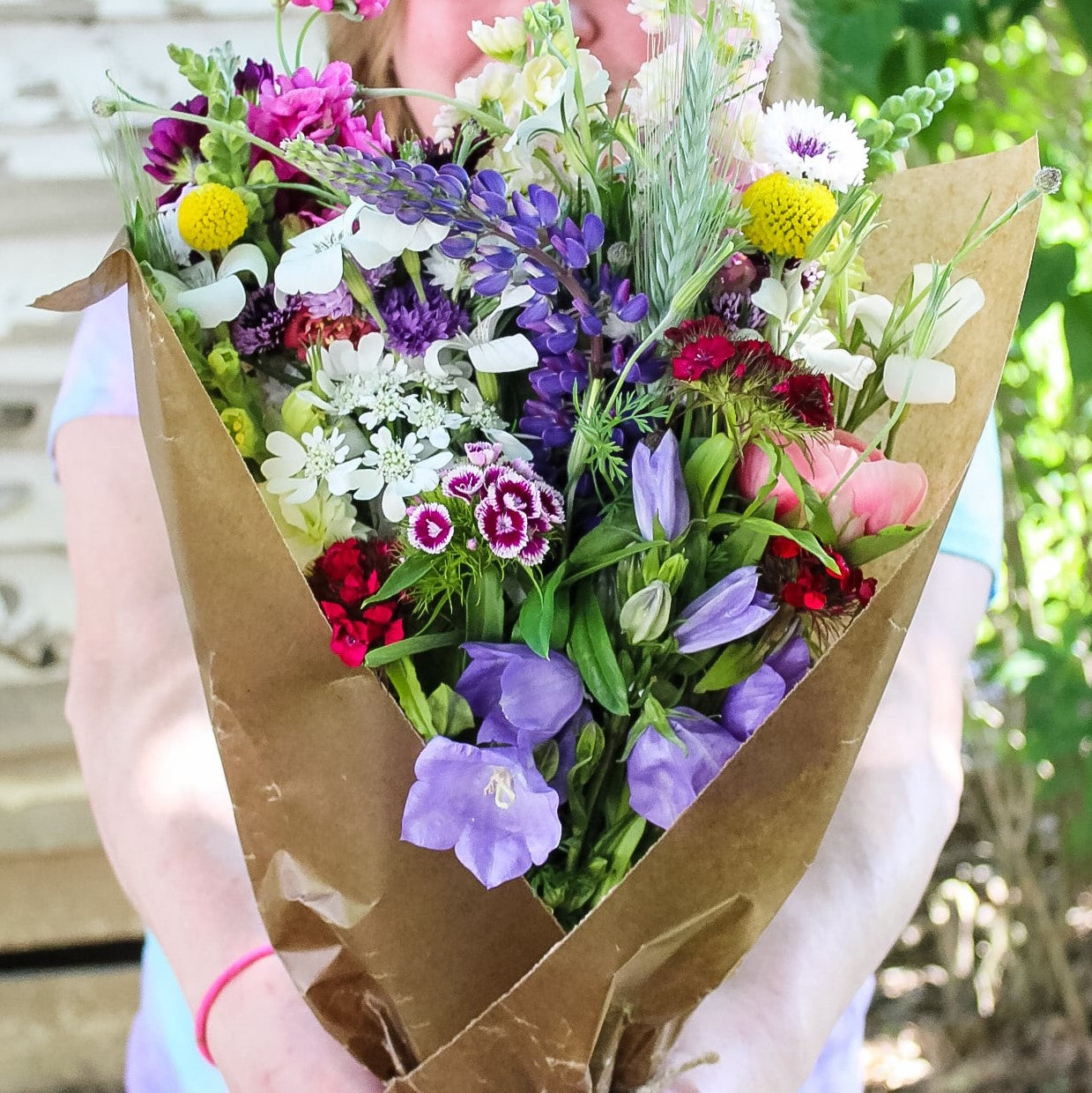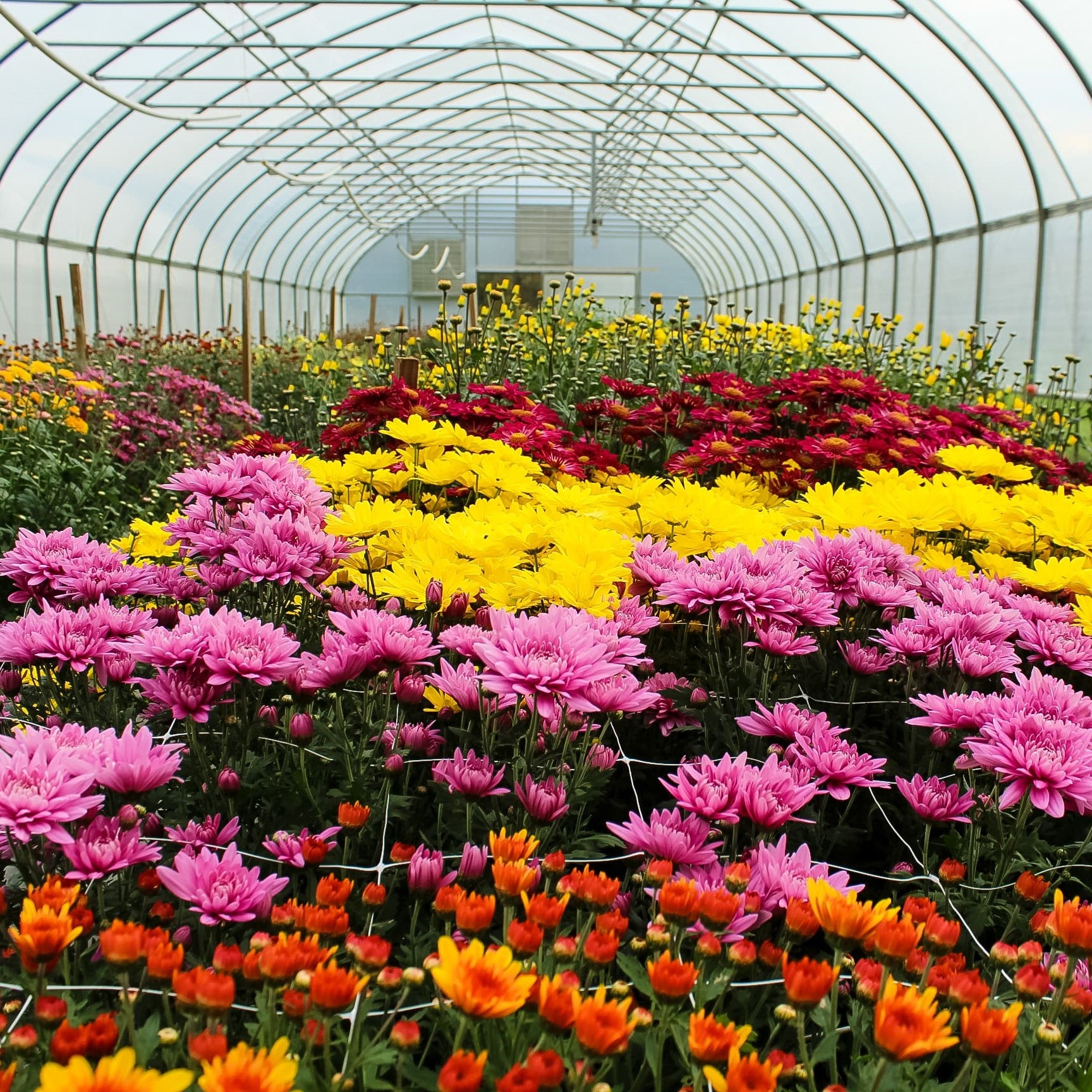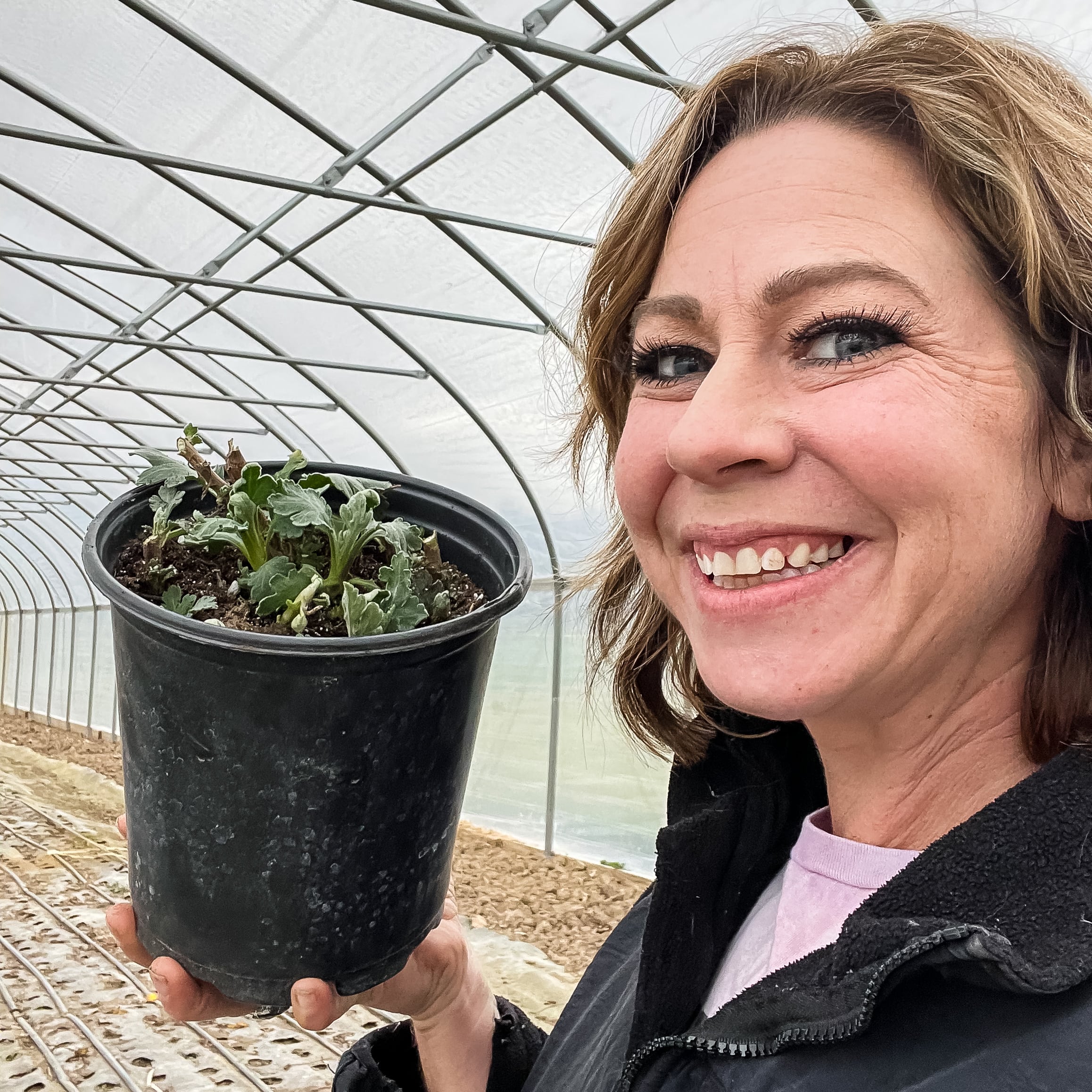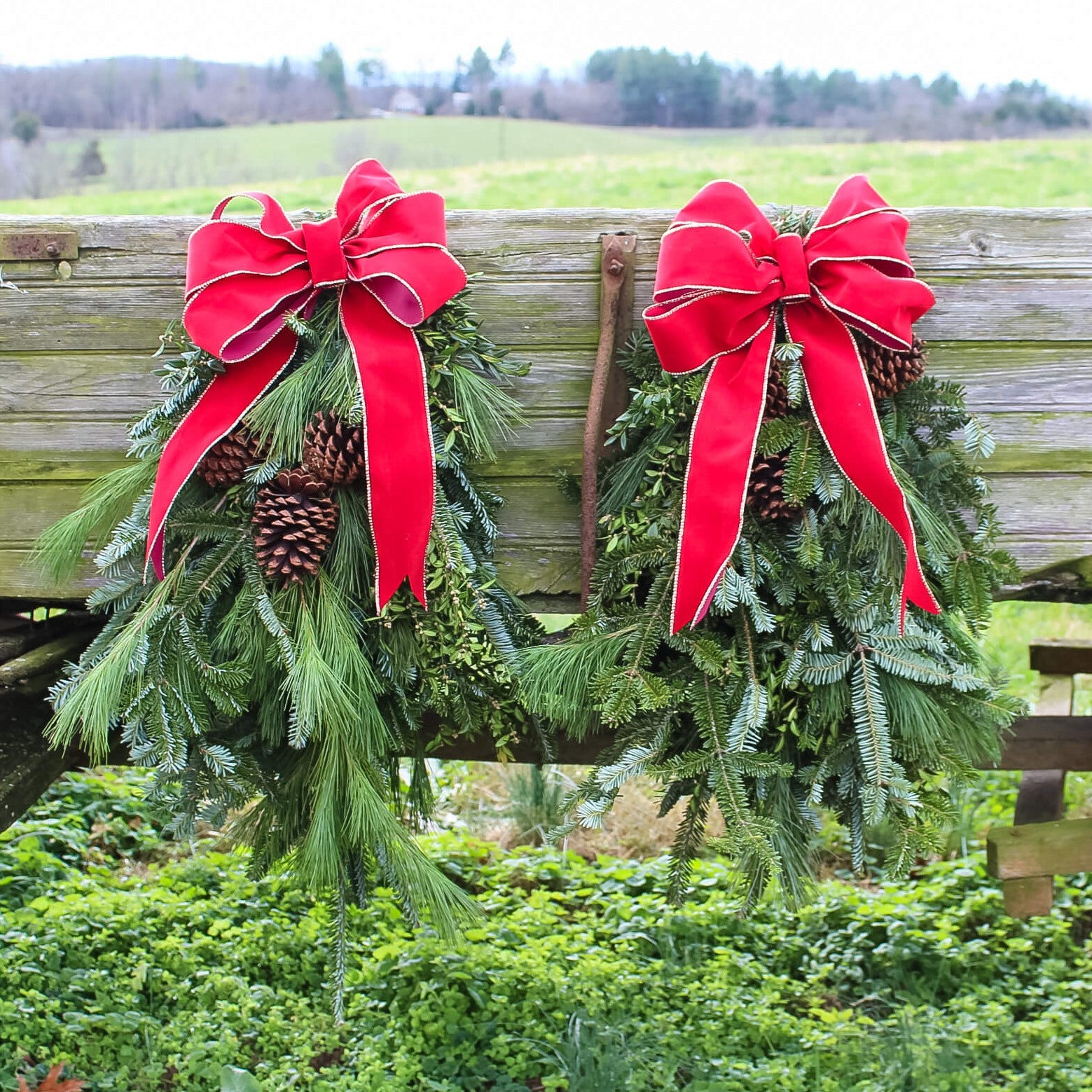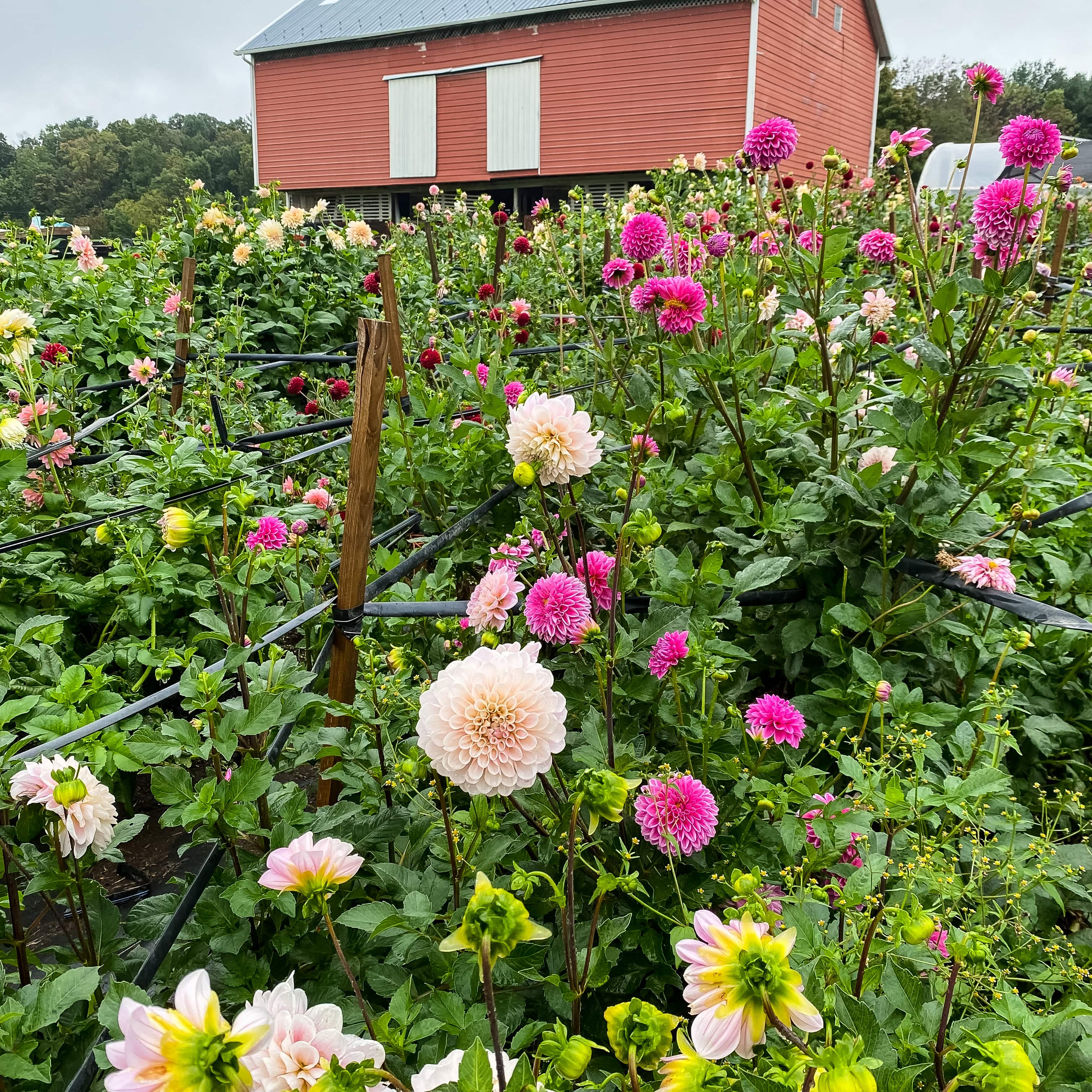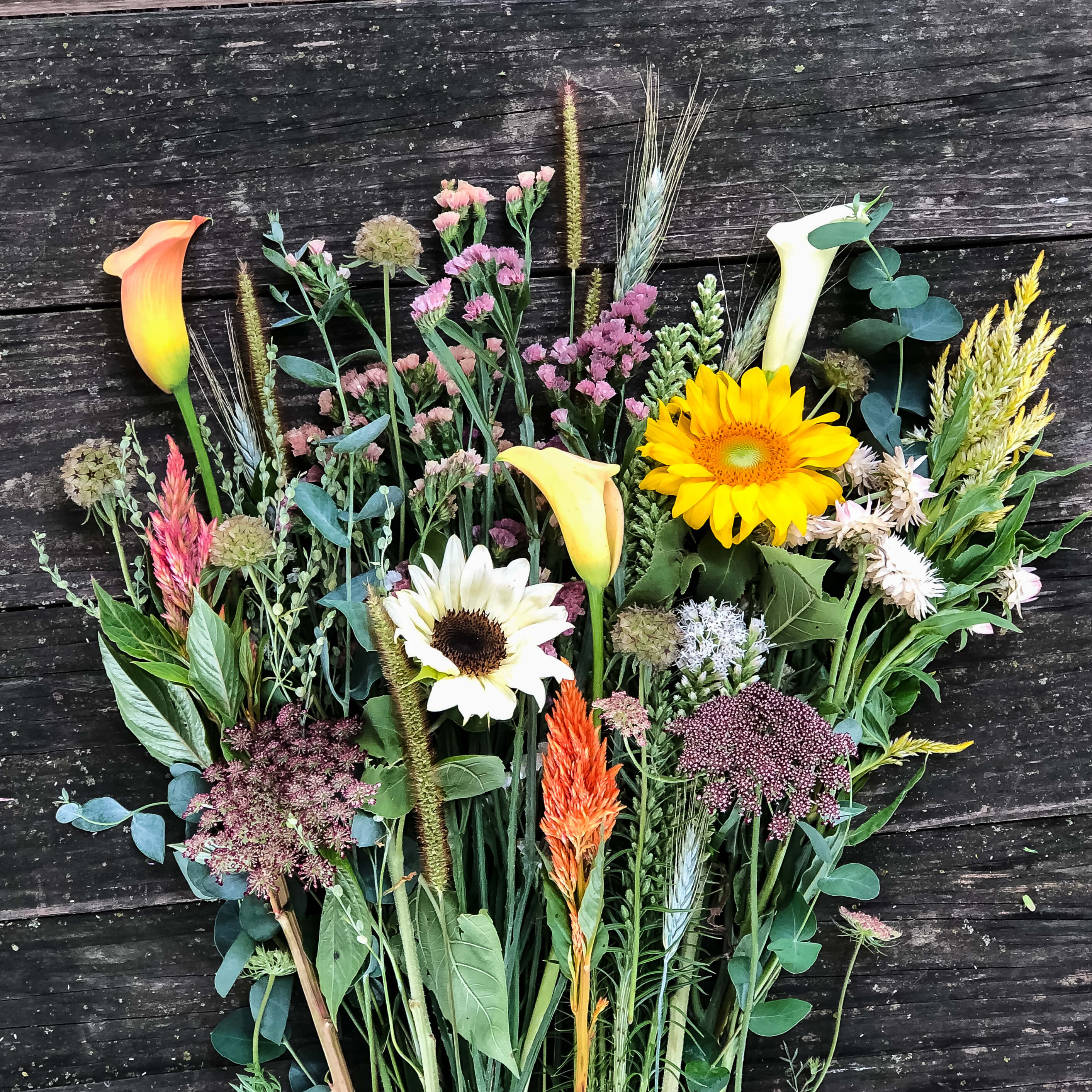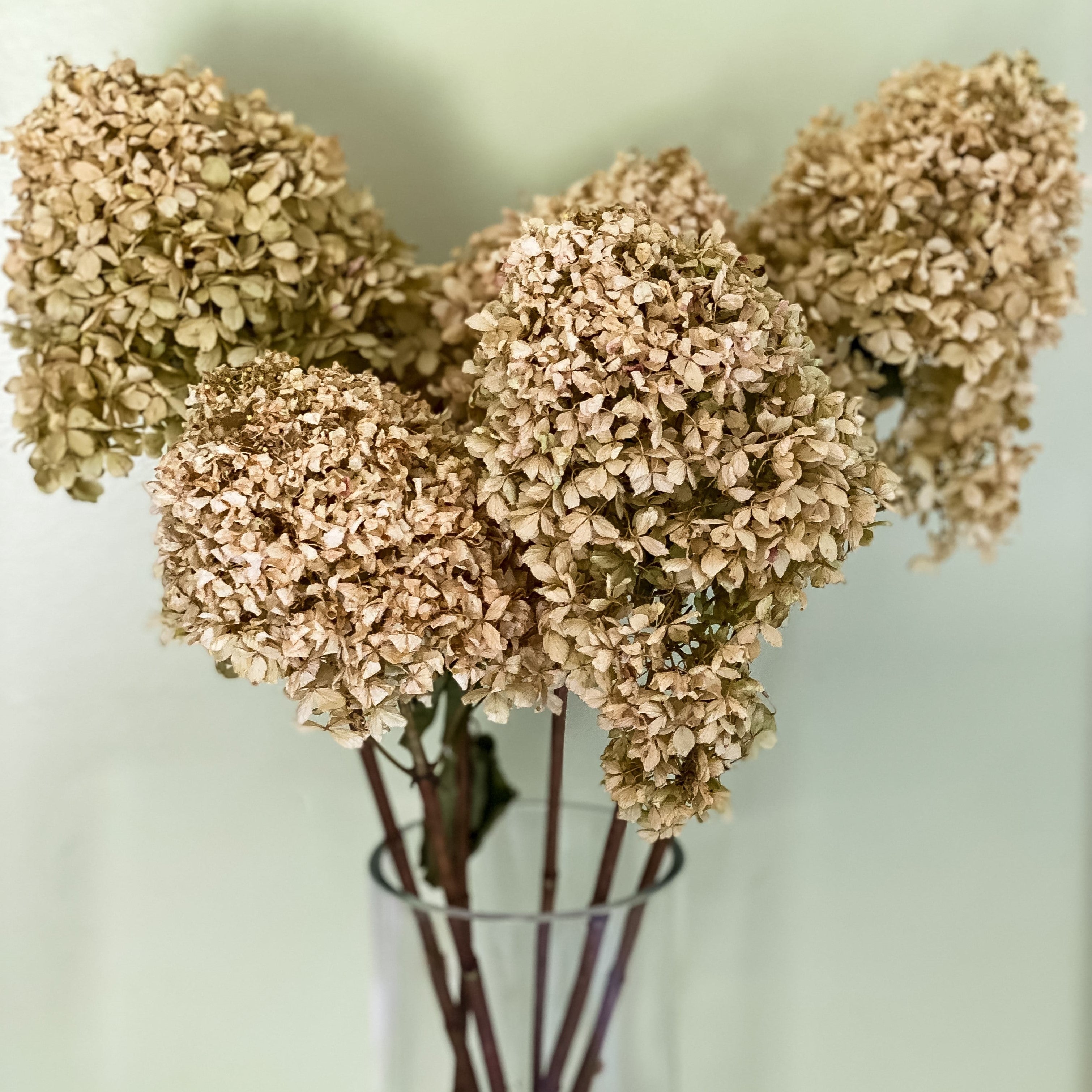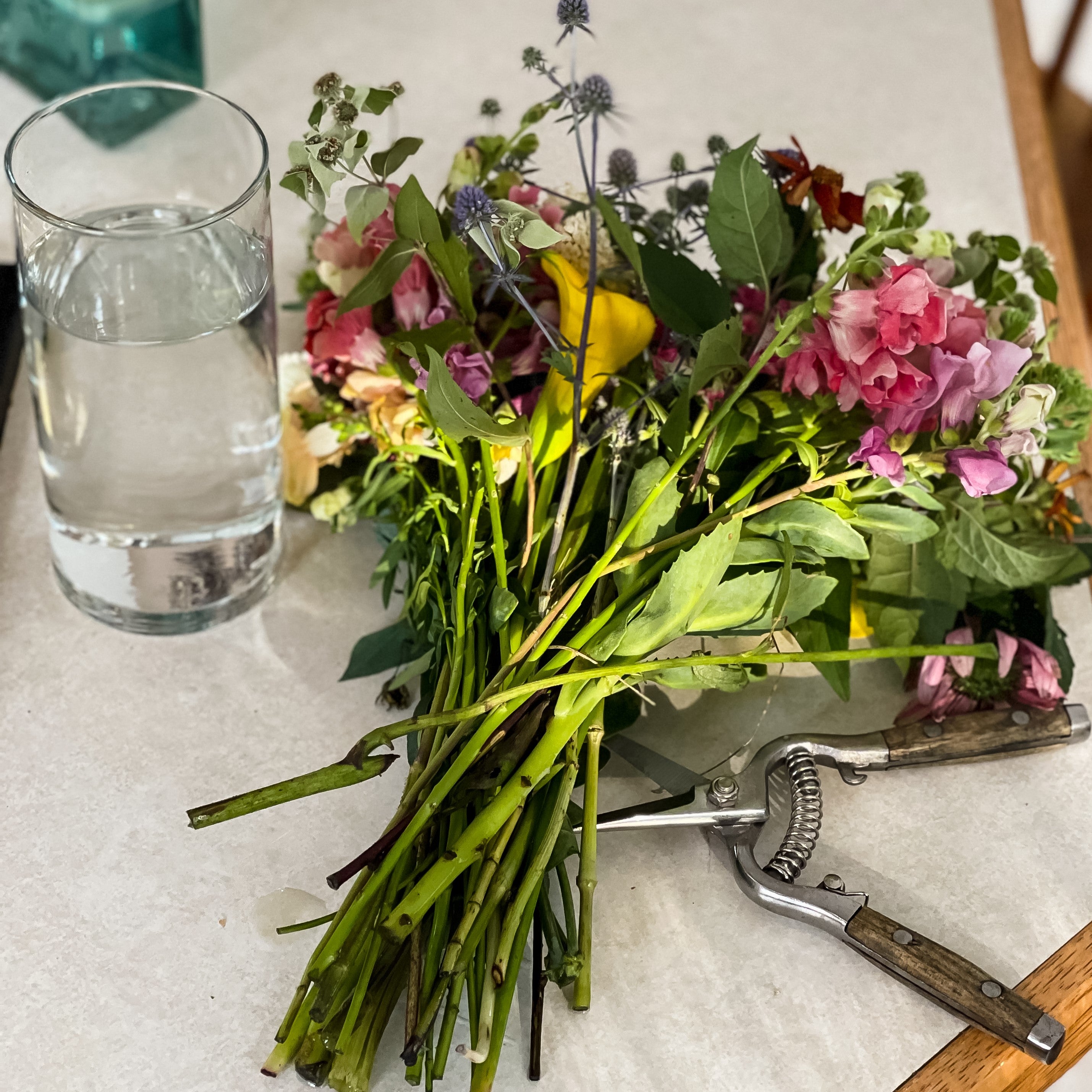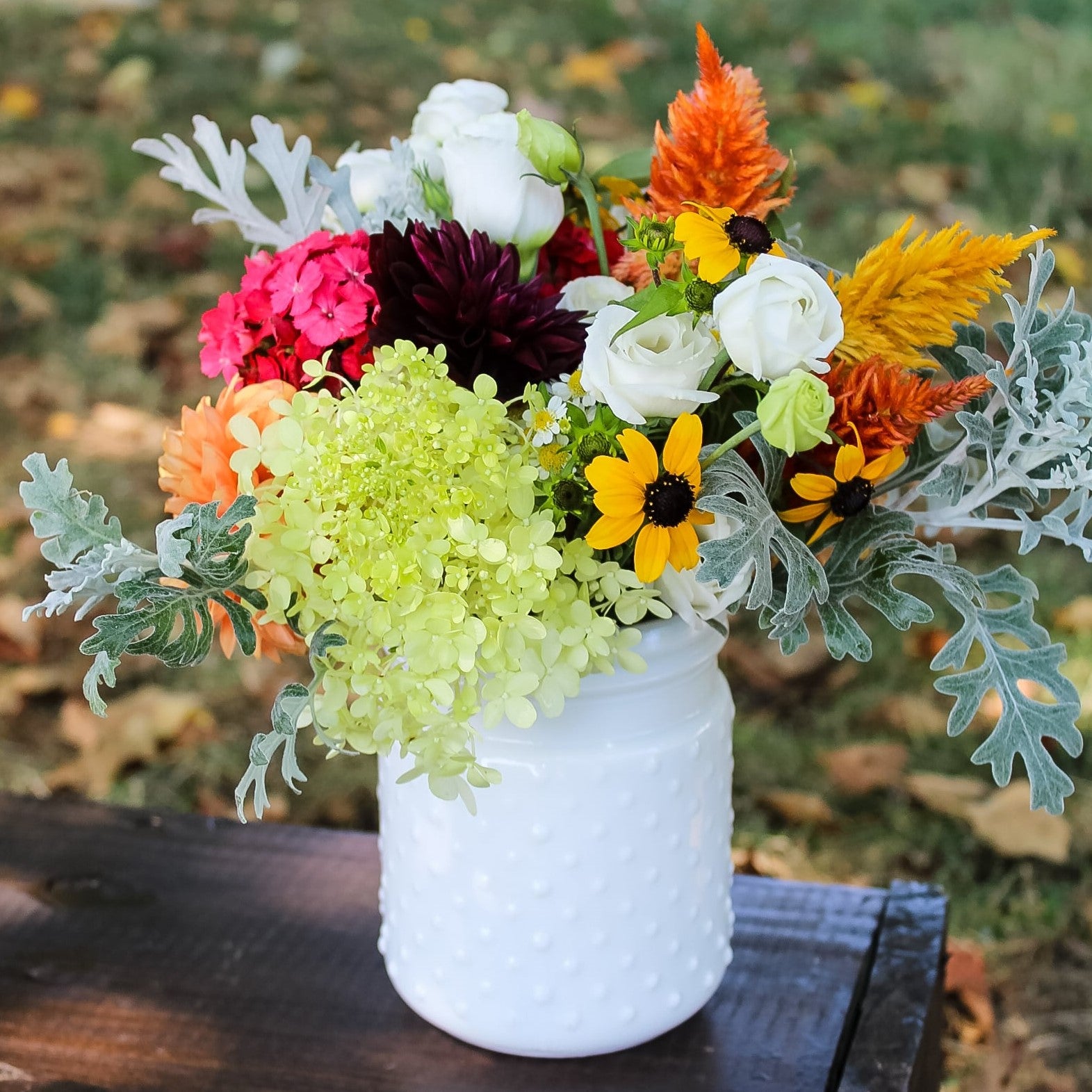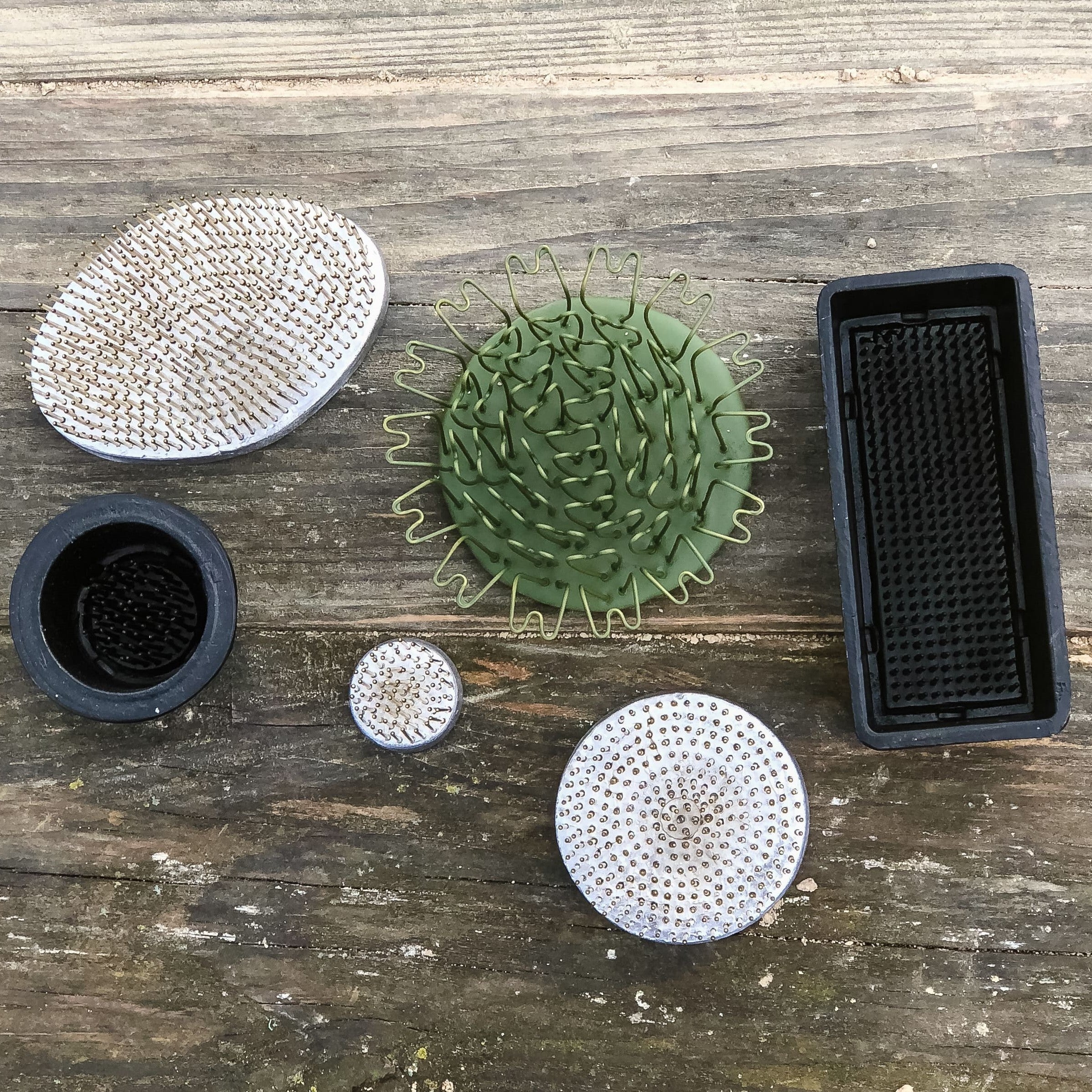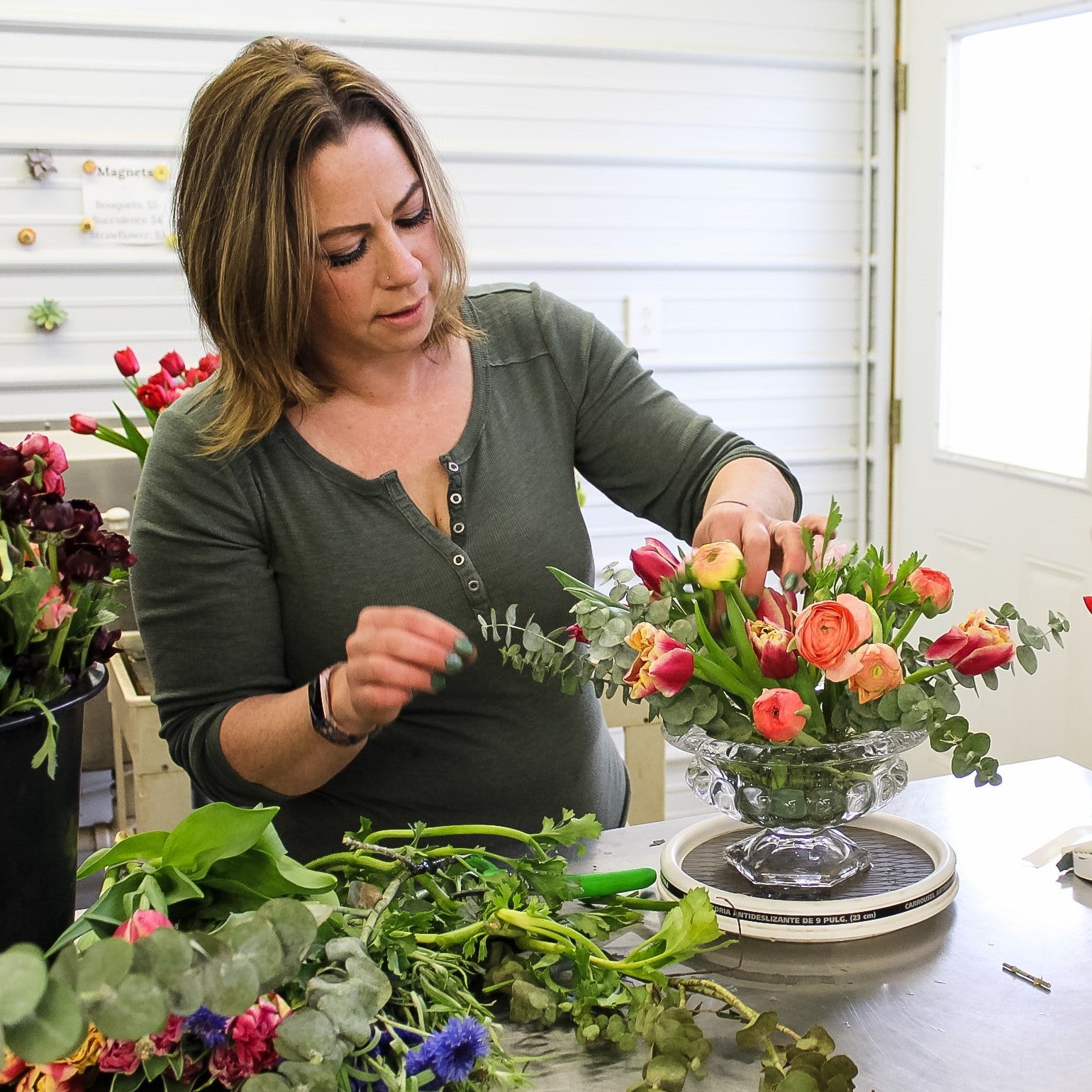Hi there! Mack here, HHF’s resident floral designer :) Each year while it’s still cold and our flower fields haven’t woken up yet, we bring in the tulips! These cheery blooms help us bridge the gap between our holiday wreaths and our spring flowers, and it’s our flower of choice for our big Valentine’s Day push. Unlike all of the other flowers we sell from our farm, we actually don’t grow the tulips here at Harmony Harvest; instead, we partner with our Virginia neighbors, Bloomia, who have mastered the cut tulip game. Tulip bulbs are expensive, and we also need our precious heated greenhouse space to get our other spring flowers started at the same time that we start selling tulips, so it makes sense for us to collaborate with our neighbors at Bloomia while we focus on growing our ranunculus, anemone, poppies, and all of our other spring flowers.

Something I’ve really come to appreciate about the world of flowers is that there is simply so much to learn! Growing and designing with flowers both hold a lifetime of information, and part of that is because so many flower varieties are different and need special care. While tulips can seem basic or common, they have their own unique quirks and hold a special place in cultures all around the world. Since I love learning new things, I thought I’d share some of my favorite tulip facts with you!
Life After Cutting
Here at Harmony Harvest, our crew is very familiar with the stages that different flowers need to be cut. Some flowers should be cut when they’re in peak bloom, while others should be cut when the bloom is still closed, as they’ll continue to open and bloom after harvesting. Tulips not only bloom after being cut, their stems actually continue to grow as well! Our tulips arrive to us with tight, closed blooms, and stay that way in our little cooler, until they come to you and get put in a vase, where they open and bloom over the next few days. Their stems will bend and grow an inch or more, which we like to call the “tulip dance”. These flowers have amazing vase life when they’re cut with tight blooms, lasting at least a week, and much longer with clean water and flower food. While we here at HHF do the work of choosing the peak stage of flowers for you, it’s helpful to know how flowers should look when you buy them to get the most life out of them.
 |
 |
ALL The Colors!
There are over 3,500 different varieties of tulips! They come in almost every color - red, white, yellow, purple, orange, even green. Some varieties are labeled as blue, but they tend to lean more toward violet. On top of that, there are plenty of tulip varieties that are multicolored, so whatever your favorite color is, chances are you can find them with tulips. There are also striped tulips, which were discovered to be caused by a virus spread by aphids - who would have thought those annoying little pests could cause such a lovely display of color? Luckily, that striped coloring is still produced artificially by using that virus to alter the DNA of tulips, without the aphids. How lucky are we to get to enjoy the tulips’ brilliant displays so early in spring?
 |
 |
Etymology, Origins, and Tulip Mania
I’m no history buff, but I did a quick search on the origins of tulips, and their story is fascinating! While a lot of us (including myself) associate tulips with Holland and the Netherlands, they actually were first cultivated in Central Asia, specifically Iran, as early as the 10th century. The word “tulip” first appeared in English as “tulipa” or “tulipant,” which came originally from the Persian word “delband” meaning “turban,” possibly referencing the similarity in shape from the tulip bloom to that of a turban. This actually might have been a translation error, since at the time it was hip to wear tulips in turbans, so the translator might have been confused. Tulips started spreading around Central Asia, but it’s still unclear on how they made their way to Western Europe or exactly when. The first account of them in Europe was described in 1559, and by 1594 they had made their way into the Netherlands. This eventually led to a period between 1634-1637 called “Tulip Mania”. During this time, tulips (then considered very exotic) were highly coveted for the wealthy and skyrocketed in value to the point that a single bulb could cost as much as a house, or 10 times more than the annual salary of a skilled artisan, and is widely considered the first recorded economic bubble in history - talk about impact! Holland is still the largest producer of tulips to this day. They finally made their way to the United States around the 1850’s in Salem, Massachusetts, and today these spring flowers can be found all around the world. How cool is it that these simple flowers have had such a long journey?
 |
 |
As we trudge through these cold winter days, it’s incredibly refreshing to have some fresh flowers around. These beacons of spring have a long history, traveling across the world over centuries, and being bred to display all the colors of the rainbow, which just goes to show how much their beauty has captivated us. If you love them as much as we do, be sure to check out our tulip bouquets!

